GIFT GIVING 2.0
LOCAL ARTISANS OFFER
UNIQUE HOLIDAY GIFTS

THEN AND NOW
VIDEOGRAPHER CELEBRATES
LAFAYETTE'S BICENTENNIAL
PURDUE HOOPS
MACKEY GEARS UP FOR EXCITING SEASON

GIFT GIVING 2.0
LOCAL ARTISANS OFFER
UNIQUE HOLIDAY GIFTS

THEN AND NOW
VIDEOGRAPHER CELEBRATES
LAFAYETTE'S BICENTENNIAL
PURDUE HOOPS
MACKEY GEARS UP FOR EXCITING SEASON
Life can be hectic, but taking care of yourself should be easy. Indiana University Health is making it easier than ever by offering same-day mammogram screenings throughout our convenient locations. With our leading-edge advancements in digital and 3D imaging, we are committed to providing the highest quality of care to women. You can trust our team of specialized physicians and technicians to provide the best, most comprehensive mammography options available. Early detection is the best protection again breast cancer. Take care of yourself and add mammogram on your to-do list by scheduling an appointment today.
ONLINE SCHEDULING IS NOW AVAILABLE IN: WEST LAFAYETTE | MONTICELLO | FRANKFORT Visit iuhealth.org/mammo or call 765.448.8100.


Dylan Johnson, Administrator - 7 years with Saint Anthony
PRIVATELY-OWNED 1-1 SPECIALIZED THERAPY SPIRITUAL CARE

At Saint Anthony Rehabilitation & Nursing Center, we believe in delivering the highest quality of client care. Our unparalleled expertise, commitment, and compassion assures that we provide the very best healthcare in each service we offer.
SHORT-TERM CARE
• Physical, occupational & speech therapy, both in/ out patient services
• Cancer Care
• Cardiac Care & Rehab
• Diabetes Care
• IV Therapy
LONG-TERM CARE
• Neuromuscular Rehab
• Stroke Rehab
• Pain Management
• Respiratory Therapy
• Physical, occupational & speech therapy
• Wound Care & Prevention
Editor
- Carol Bangert
Art Director/Graphic Designer
- Kara Bishop
Vice President, Marketing & Communications
- Chelsie Freeman
Content Marketing Specialist
- Shelby White
MISSION
Greater Lafayette Magazine captures the spirit and vitality of the people who call Greater Lafayette home and what it means to live, work and thrive here. It tells the region’s success stories, from business expansions, entrepreneurship, leadership and philanthropy to quality of life, arts and cultural events. Our hope is that readers of Greater Lafayette Magazine will become active participants in the world around them and join in our mission to make Greater Lafayette the place where progress, creativity and community come together.
AUDIENCE
Greater Lafayette Magazine serves as the leading quality-of-life and business trade publication for the area. Leveraging our award-winning team of writers and designers, Greater Lafayette Magazine attracts a diverse group of readers who are engaged in the community as consumers, visitors, business leaders, volunteers, residents and future residents of Tippecanoe County. This publication is for anyone that appreciates a good story that not only reveals something new about our community but offers insight and pride for the place we call home.
To advertise or receive information about advertising in Greater Lafayette Magazine, contact Amy Sundell at (765) 742-4044 or amy.sundell@greaterlafayettecommerce.com
PRINTER
The National Group
CIRCULATION
Greater Lafayette Magazine is published four times a year (January/April/July/October), with a print distribution of 4,000, and up to 10,000 online subscribers/views. Distribution channels will include online, mobile, various newsstands, and pass-along venues including restaurants, businesses, organizations, community centers, hotel lobbies and healthcare facilities.
Greater Lafayette Magazine is a publication of Greater Lafayette Commerce
337 Columbia St., Lafayette, IN 47901
• (765)742-4044
• info@greaterlafayettecommerce.com
• greaterlafayettecommerce.com

The THUNK THUNK THUNK of acorns on the roof is a reminder that summer has given up the last of its bounty. Those days of field-fresh sweet corn, ripe tomatoes and flowers boasting every color imaginable have packed it in, stepping aside for au tumn’s return. I used to mourn the end of summer, but more and more I look forward to fall’s gifts as well.
The acorns striking a chorus across my roof and scattered across the yard are an afternoon snack for a gathering of deer that live in our woods – and a reminder that the oak that provides welcome shade in the summer continues to give into the fall. The garden’s colors are fading, but goldfinches giggle with delight as they in ventory the feast of seeds left in coneflowers and sunflowers. They sound grateful for the gifts left behind for them. And so it goes. Autumn ushers in its own season of giving in our daily lives as well. Maybe you host a Thanksgiving gathering for family and friends or lend a hand at the community Thanksgiving dinner. Perhaps you’re famous for a unique take on holiday decorating or gift giving. Or maybe you find a way to give all year long.
In this issue of Greater Lafayette Magazine, you’ll find ways to give and to give back. If you’re not familiar with the Court Ap pointed Special Advocates program – CASA – here’s a chance to learn more about this crucial program for children, and what yo can do to help (Page 58). You’ll also meet a growing group of wom en (and men) who’ve joined forces to make a big difference in our community (Page 28).
Speaking of big gifts, check out the evolution of The Arts Fede ation’s Wabash Walls mural program. The goals, scope and talent continue to impress, making north central Indiana an arts desti tion (Page 34).
But let’s not forget about holiday gift giving! You might consider one of these small local businesses that offer one-of-a-kind way celebrate the special people on your gift lists (Page 70).
Giving really knows no season, and as fall soon steps aside for the quiet days of winter, I hope you find a reason to give thanks and give back.

Editor, Greater Lafayette Magazine
Get to know the Greater Lafayette community by subscribing to Greater Lafayette Magazine. It’s easy! Go to greaterlafayettecommerce.com and click on the About Us tab. Then click on Greater Lafayette Magazine to view past issues and subscribe.

You built your small business in greater Lafayette because it’s where you want to be. It’s a community you improve through innovation and by giving customers your very best every single day.
That’s why Wintek Business Solutions is here, too. We offer leading-edge connections, secure business protection and unrivaled customer service. It’s world-class support without the need to go around the world.
Just like you, we’re right up the road — helping make greater Lafayette a better place to call home. And there’s nothing small about that.


44

ON THE COVER:
Top-tier semiconductor supplier
Welcome Note|page 4
From Editor Carol Bangert


BUSINESS & PROGRESS
What You Got, Scott? |page 8
Rubia Flower Market: New digs, same great vibe |page 10
Caterpillar expansion has global impact |page 24
Ask the Experts |page 52
Four companies announce growth and expansion |page 64
West Lafayette welcomes two extended-stay hotels |page 86

COMMUNITY & CONNECTIONS:
Videographer brings heart to Bicentennial story |page 16
Collective giving with 100+ Women Who Care |page 28
Wabash Walls: Art with community in mind |page 34
Court Appointed Special Advocates put children first |page 58
Locally made, totally unique gift ideas |page 70
SK hynix will build an advanced manufacturing facility at Purdue Research Park in West Lafayette. |page 44 Photo provided 10 16
Purdue hoops fans ready for another great season |page 80
The magic behind the John Purdue Club |page 88
Holiday events round-up |page 92
At Old National Bank, your business finds true partnership. One on one attention. Asking the right questions and anticipating your needs. Whether it’s equipment leasing or expansion loans, your business can reach the top of the charts. We take a thoroughly modern approach to the strength and stability needed for commercial banking. And we have since 1834. Old National Bank. Where relationships and results matter.®
Visit oldnational.com/commercial and get started today. It’s time to Get Old.™
Commercial Banking


Twenty years ago, the brightest minds in economic development were focused on the “creative class” and dubbed traditional economic development focused on manufacturing as “chasing smokestacks.” With manufacturing jobs relocating to lower-cost countries like Mexico and China in a trend called offshoring, researchers looked at the top performing economies across the U.S. and saw that those areas had higher concentrations of knowledge-based workers. Many believed that attracting these creatives to their community—educated, innovative and entrepreneurial—could revitalize struggling Midwestern communities.
The idea was simple: transform local economies by becoming a hub for the creative class.
As manufacturing jobs dwindled, towns and cities turned to investing in initiatives aimed at attracting these “cool creatives.” Economic development plans proliferated and the concept of “quality of place” gained traction as a crucial pillar of local governance. Communities poured resources into arts districts, coffee shops, co-
working spaces, and vibrant public spaces, all in hopes of drawing in the sought-after creative class.
This recognition that talent will flow to “cool places” was correct and is still a critical aspect of economic development today, but it wasn’t the panacea to relieve communities’ economic woes. The reality was far more complex. The decline of manufacturing was an economic shift that didn’t just affect local job markets; it altered the fabric of entire communities. As factories closed, many local economies lost not only jobs but also the ancillary businesses that relied on those workers. The hope was that creatives would fill this void, yet many communities struggled to offer the kind of incomes and opportunities that aligned with the skills and aspirations of the creative class.
This challenge raised questions about the sustainability of such strategies. How do you invest in quality-of-life initiatives without the industrial tax base to pay for it? And more importantly, was it enough to create a vibrant community without addressing the core economic issues?

As communities scrambled to attract creatives, they soon faced an uncomfortable truth: No amount of quality of place investment can serve in place of mountains or coasts. For many of our cities, you can’t attract or retain talented people without good, rewarding jobs. New creative initiatives and vibrant atmospheres would not automatically lead to sustainable employment opportunities.
Today, as we experience onshoring, reshoring, and near shoring of manufacturing, the opportunities for communities like Greater Lafayette are significant.
Perhaps Purdue University President Mung Chiang says it best. At a recent Engage Indiana event held at Purdue, he said, “Let me also highlight something extremely important to our heritage and future as Indiana’s public University. That is creating jobs and workforce and innovation together that brings us to engage Indiana’s conversation this morning in Greater Lafayette. Without jobs, workforce won’t stay. No one wants to stay and be underemployed. Without workforce, jobs won’t come or be created. But without innovation to rewrite the economic equation, we cannot long sustain that co-creation of jobs and workforce together.”
As we reflect on the past two decades, it’s clear that a multi-faceted approach is essential.
Here are some lessons learned:
1. Focus on job creation: While attracting talent is vital, the foundation of economic development lies in creating sustainable, high-quality jobs. This requires partnerships with local businesses and industries to ensure that the workforce meets their needs.
2. Invest in education and training: Communities must prioritize education and workforce development to equip residents with the skills required in the evolving job market. This not only attracts talent but also retains it by providing growth opportunities.
3. Encourage collaboration: Innovation thrives in environments where diverse ideas and disciplines intersect. Fostering collaboration between different sectors—government, research, tech, manufacturing, the arts — can lead to creative solutions that benefit the entire community.
4. Enhance quality of life: Quality of place matters, talent will flow to great places. Communities should also focus on housing, healthcare, and other quality-of-life factors that contribute to overall well-being.
The Greater Lafayette Region has incredible opportunities, and you can see our region implementing smart, economic development plans that encompass Jobs, Workforce and Innovation. ★
After 20 years in a former garage in a river basin, Rubia Flower Market has moved up in the world.
In March the European-style flower market relocated from its original site, a former automotive garage on State Street in West Lafayette, to 2139 Ferry St., Lafayette. The new location is south of Murdock Park at the top of a hill in a building that was home to Samson and Delilah Salon for many years, then Art With a Happy Heart boutique.
“We are excited to continue offering a unique shopping experience and feel like we’ve moved from the garage to the house,” says owner Sarah Harmon. “We’ve had an overwhelming amount of support, and people love this space.”
Rubia opened in 2004 in the rented building near Wabash Landing, offering buckets of fresh flowers that could be purchased individually or crafted into arrangements by the shop’s floral designers. The business became a popular staple, offering affordable flowers for college students and residents alike.
“The old space was unassuming and offered a unique style of shopping with just an explosion of colorful flowers,” Harmon says. “We felt it made flower buying less intimidating and more approachable and affordable. And we’ve taken that magic with us.”
Harmon started working at Rubia in 2004 as a high school student, just a few months after the shop opened. She continued working part time there while pursuing a degree in photography and related media from Purdue. Floral design became a passion, and she purchased the shop 10 years ago from the original owner.



“We leased the (garage) space for years but knew we would have to move at some point,” Harmon says. “This move was instigated by the redevelopment plan for that area, and we looked for another location for quite a while, knowing that we had to find a space with personality, or we’d hear about it from our customers!”
Long-time customer Kier Crites Muller, who started shopping at Rubia in 2006 when she was the innkeeper at Perrin House Bed and Breakfast, sees the new building and location as a real bonus.
“I adore the new location! It’s bright, quaint and cozy — everything you want for a neighborhood flower shop. It reminds of a shop you’d see in a Nancy Meyers rom com,” Crites Muller wrote in an email. “I know Sarah went through a hard time finding the next ideal spot and the Ferry Street location could not be more perfect to complete her vision for the future of Rubia.”
Owning the Ferry Street property brings several advantages, and the new space holds lots of potential. While the square footage of the new property is about the same as the garage space, the layout provides new opportunities.
The house is the main retail area, where three rooms are bursting with color as blooms and stems fill buckets positioned on the floor, countertops and tables. A cooler occupies the west side of the building. The sun-filled east room holds gift and garden-themed items for sale. Harmon hopes to expand the gift selection to include jewelry and garden and floral-themed books.
An adjacent outbuilding is an ideal studio space for private floral design classes and events that can be scheduled with a group of friends or business associates, Harmon says. Several classes with holiday themes are planned this year, but the space also is helpful when the four full-time floral designers are working on large orders.
A space behind the house will eventually hold a greenhouse where succulents and specialty plants can be grown, Harmon says.
“I love the new location,” says Emily Colombo, a high school friend of Harmon’s and frequent shopper at Rubia. “It’s cozy and homey and there’s more space to spread out. It’s just charming, and it’s just easier to move around and allows Sarah to expand and reach some of her goals.”
She adds that Rubia is bucking the idea that college stu-







dents won’t cross the river, because there frequently are lots of young people shopping for flowers, and Harmon confirms that business has remained steady in the new building. But part of Harmon’s long-term plan is to open a satellite shop near the Purdue University campus to make it easier for Purdue students to grab a bouquet.
Harmon orders all the flowers for the shop, including her favorite — the ranunculus — and a fresh shipment is delivered each Tuesday from area growers. Locally grown flowers also are offered in season and are one of the reasons Colombo enjoys shopping there.
“I sometimes order a bouquet for someone, or just pick up a few stems of locally grown flowers for my shop,” says Colombo, who owns A Pinch of Pepper Tea & Spicery in downtown Lafayette. “I just enjoy going in to check out what they have.”
Crites Muller made it a habit to buy bouquets a couple of times a month during the pandemic to brighten up her Battle Ground home and worked with the Rubia wedding coordinator to design arrangements for her backyard wedding in 2021.
“I love giving flowers as gifts for friends, for birthdays or ‘just because’ and I don’t think we do that enough for one another,” she says. “And it’s a great way to support a small, local, woman-owned business.”
Rubia offers a Bloom Club in which members receive a bouquet on a regular schedule, and custom orders also are a big part of the shop’s business. Harmon confirms that most of Rubia’s regular customers are buying for themselves and for special occasions. She’s grateful that sales have not fallen off following the move and customers are enthusiastic about the new space.
“We’ve had an overwhelming amount of support,” Harmon says. “People love this space, and the street parking is working out. The neighbors are excited to have us here and they like having a walkable business in the neighborhood.”
As for the old flower garage in West Lafayette, it’s scheduled for demolition along with five other buildings at the northeast corner of State Street and River Road. The 5.23acre Levee Landmark project will include two, seven-story buildings featuring 21,700 square feet of ground-level retail space, and up to 590 apartments, says Jenifer Van Schuyver, West Lafayette director of development. ★

Capturing 200 years of Lafayette history — from its beginnings as bucolic river flats to a bustling, progressive river city — in a video just a few minutes long seems like a daunting task.
But not for videographer Jack Klink, who, despite his current Los Angeles address, grew up in a family with deep roots in the Lafayette community and who graduated from Jefferson High School and Purdue University. The 33-year-old has been reflecting our community in everything from television commercials to promotional videos since he was a teenager.
You’ll meet this busy videographer, who works with noted performers in LA and has received recognition for film editing he did for "Saturday Night Live," in a Q&A that follows. But first some words from local folks who are not surprised by Klink’s success.
“I alway knew he was going to make a name for himself,” says Randy Brist, who headed the radio and television program at Lafayette Jeff. Klink was already so knowledgeable when he entered the program that Brist allowed him to skip introductory classes.
“It was very much the case of the teacher being the student,” Brist is willing to admit. “I think he knew more than I did, putting together videos and editing. He clearly had a talent for that. I always learned something when he showed me a video. My role was to provide a place to come to and do what Jack does best, to shepherd him along.”
When he was just 14 years old, Klink became a “professional” by videotaping, editing and produc ing for sale a video of Tecumseh Middle School’s annual Pow Wow talent show. “I was impressed by his maturity and focus from the start,” says choir teacher Marcy Miller. “Jack rose to the challenge and produced exceptional work, rivaling that of seasoned professional videographers.”
Stephanie Bossung, vice president for account services at Newpoint Marketing, has worked with Klink for 13 years and considers him “a go-to partner in delivering impactful and memorable campaigns.”

Jack consistently elevates our clients’ stories to new heights. His ability to work with our ideas, add his own, and create a visual narrative, ensures that each project resonates deeply with the target audience.”
- Stephanie Bossung, vice president for account services at Newpoint Marketing


Now it’s time to meet Jack Klink.
Where and when did the fascination with video and telling stories begin?
I have been fascinated with cameras since I was a baby. Like many parents of the ’90s, mine were excited to get a new digital videotape camera to film the “Life of John Jackson Klink,” which is how my dad, Steve, labeled the tapes of the first five years of my life. I can be seen reaching for the camera throughout these recordings.
Gradually the tapes transitioned into “John Jackson Klink Films His Own Life.” At age 12, I produced a video for the Ninth Street Hill Neighborhood that was entered into Family Fun Magazine’s quest for “America’s Most Fun Neighborhood.” Ninth Street was one of the winning neighborhoods!
In high school, it became a business. I filmed, edited, and sold DVDs of the Tecumseh Middle School’s Pow Wow spring performance for 11 years. The profits allowed me to buy my first professional video camera.
Throughout high school and college, my Greater Lafayette video production business grew to include clients like Purdue University, Ivy Tech, United Way and Indiana Packers. I’ve made countless videos for the City of Lafayette and commercials for local businesses like Walt’s Other Pub, Red Seven, Cafe Literato, and more. I continue to fly back to my hometown for this client work and recently produced the “Live Expansively. Live Greater.” campaign video for the Greater Lafayette Marketing Coalition, which felt like a culmination of all the work I had ever done locally.
Is there a teacher or other individuals you credit with inspiring and supporting you as you delved into this hobby turned career?
Cecil Shoemaker and Marcy Miller were huge in pushing me towards launching my business when I filmed the Pow Wow back in 2006. I really am so thankful for them for trusting a 14 year old to do that!
Randy Brist, head of Jeff’s Radio & TV program accepted me into the RTV program earlier than other students. He embraced my abilities, allowing me to rent cameras from RTV (something students were never usually allowed to do) to film that first Pow Wow.
While these teachers were integral in my career trajectory, my parents, Steve and Angie Klink, are first and foremost the reason I was able to become who I am today. Their mix of creative/technical talent and willingness to let me take my interest and run with it is truly the reason I am who I am.
How do you approach a video such as the one you’re making for the Bicentennial?
When David Huhnke, Lafayette’s director of marketing and communications, reached out about creating a video for the city’s Bicentennial, I knew he’d want something special. The concept for this video really stemmed from the Bicentennial Committee’s vision to mix archival photos of the city with photos and video from today — the goal being to celebrate both the past and the future of our city.
One of the amazing things we are doing in this video is transitioning from old photos into today by filming today in the exact same locations as the old photo. It’s very cool to see the transformation.
Would you say there is a signature style to your videos?
One thing that my style includes, that I feel a lot of other videographers miss, is heart. Every project I do has an emotional center. But the trick is to not try too hard and let the project’s emotional core find itself.
You have been generous to your home community, coming back to do videos for everyone from the Lafayette Master Chorale to Cafe Literato, from Indiana Kitchen to Purdue Health & Human Sciences. Not everyone who follows their career to Los Angeles comes back home. Why do you?
When I first moved out to LA, I really did not think I would come back to work on projects in Lafayette anymore. But I was surprised by the number of clients who were willing to pay to fly me back. This was the perfect way to continue to do what I had always done for income while building my connections in LA. When one client would pay to fly me back, other clients would get lucky because I would tell them I was going to be there and could fit their smaller projects in, too.
I’ve been in LA for eight years and I am definitely more picky about projects I’ll go back to Indiana for. I did move to LA for a reason after all! In 2020, after working on Saturday Night Live, the LA connections really grew and I get so much more work here in LA now. I don’t think I will ever stop doing smaller projects for clients like those in Lafayette, but the goal would be for those to be more like side projects to my bigger goal of directing documentaries.

One thing that my style includes, that I feel a lot of other videographers miss, is heart. Every project I do has an emotional center. But the trick is to not try too hard and let the project’s emotional core find itself.”
- Jack Klink



Good time to ask: What makes LA the place you need to be for your career?
When I first moved to Los Angeles I didn’t expect to fall in love with the city quickly or maybe even at all. I couldn’t believe how quickly I did fall in love with LA. A big part of that is due to the fact that literally everywhere you go, everything you see, and everyone you meet is likely tied to the film industry in some way. Even just being able to go to a store to get a piece of camera gear instead of having to have it shipped to Lafayette feels amazing.
Once I started to make a few connections in LA, it didn’t take long to feel like I have a connection to pretty much every corner of this industry in some way. At this point, it feels like I have everything I need at my disposal, it’s just a matter of me making the right effort to do what I want to do.
Your website touts your skills as a director, editor and cinematographer. Is there one of those “hats” you enjoy the most?
In Lafayette, I almost always wear all three at once. I had to do it all to make the video the way I wanted it to be. Now, I do know some great Lafayette videographers, Brian Powell and Qiqi Wu, who film for me often. Editing is perhaps the most valuable skill I have. I’ve always known that if I show people what I can do with a piece of editing software, I will end up in that career forever. And I don’t want that. I want to be on set, I want to produce/direct projects like I always have, I want to be creatively involved from start to finish.
In 2020, I gave Chloe Fineman a taste of what I can do with editing software and in a matter of just a couple weeks, she had me editing on three episodes of "Saturday Night Live." It was amazing and like a dream come true, but I could feel a risky way forward—inside, behind a computer for the rest of my life.
You seem to be proud of your ACE Eddie Award nomination for editing a "Saturday Night Live" episode. Can you tell us a bit more about this project?
In 2020, a pandemic year where I feared I would be low on work like the rest of us, it was almost beyond comprehension that I was asked to edit such a historic show that I had been a fan of since high school. I was elated, and it truly was a dream come true. I worked remotely just like the rest of the SNL cast and crew during those months. There was a vibe on all the calls and emails and we were super excited to be doing something special, something SNL had never done before — creating pre-taped and “shot at home” episodes of the “live” show.
Then to get nominated with the other editors from that episode by the editors’ union—a union I was not even a part of yet— felt like even more of a dream.
Tell us about other projects you’ve landed since being in LA that you are particularly proud of.
For a few years, I was developing a documentary project for Hulu about Lafayette’s Natalia Grace, a Ukrainian-born American with dwarfism who, in 2010, was adopted by an American family but abandoned by them two years later. That project didn’t come to fruition, but being involved with the players from the case led to me becoming an executive producer on the second season of The Curious Case of Natalia Grace on Investigation Discovery or Max which was released in 2023. I worked to include local law enforcement and prosecutorial voices to that season of the show. I am super excited to use what I’ve learned from this project to develop and pitch a new documentary idea of my own again very soon.

I’m also super proud of the work I’ve gotten to do with comedians like John Early, Patti Harrison, Bridey Elliot, Abby Elliot and Brittany Broski. I’m the director of photography for Brittany’s show Royal Court on YouTube, where I’ve had the fortune of filming Charlie XCX, Bretman Rock, Cole Sprouse, Rhett and Link, and other stars. I’ve also worked with nonprofit Family Equality to produce/shoot/edit videos with Niecy Nash and Jesse Tyler Ferguson.
Where would you like to be in your career 10 years from now?
Ten years from now, I would love to be able to say I have directed a documentary that has impacted many viewers. Documentary feels like the right path for me now, but comedy is also really finding its way into my life in a way I never expected, and I absolutely love it. A funny documentary, maybe? Mostly I’m excited to see what comes next! ★

Look forward to these events during Lafayette’s 2025 Bicentennial year. And this is just the beginning. Details and dates may change. Go to lafayette.in.gov/bicentennial for up-to-date information.
★ JANUARY
• William Digby’s birthday in January 1802, kicks off 200 hours of community service for the year provided by area schools.
• Specialty retail items introduced
★ FEBRUARY
• “200 Reasons We Love Lafayette” banners, created from community input, are hung
• Bicentennial pop-up history exhibits open at Lafayette City Hall
★ MARCH
• Kick off of Bicentennial “Walk and Talk” tours downtown; tours continue through October
• Rock It Out: Students paint and hide rocks donated by Wrede Rocks
★ APRIL
• April 5, Afternoon Tea at Fowler Mansion
• Downtown window painting with local history themes
★ MAY
• May 3, Generations 2025 Fine Arts Exhibition and Sale, opening event Haan Museum, 2-5 pm; exhibition and sale runs May 4-31
• May 24-25, special Memorial Day weekend activities at Columbian Park
• May 25, Founder’s Day activities
• TAF’s Quilting Connection: Lafayette Quilters at the Bicentennial
• May 26, Memorial Day ceremonies with local Veterans groups. Possible community picnic. Evening Citizens Band Concert.
★ JUNE
• June 8, Afternoon Tea at Haan Museum
• June 12, "Celebrating 200 Years of Arts & Culture," opening reception, Haan Museum, 6-8 pm; exhibit runs June 13-August 9
• June 25, Taste of Tippecanoe
• Bicentennial Costume Ball (Date and location TBD)
★ JULY
• July 1, Film Festival at the Long Center honoring film director Sydney Pollack on his birthday
• July 12, Bicentennial Riverfest
• TAF exhibit by Michelle Wood-Voglund, “Grand and Gone: Lost Buildings of Lafayette”
★ AUGUST
• Two exhibits open Aug. 21 at the Haan Museum: “Hoosier Heritage on Canvas: Indiana Farms & Gardens” and “The Best of Scott Frankenberger,” noted local ceramic artist
• Kick-off of poetry and essay contests in local schools
★ SEPTEMBER
• Sept. 6, dedication of Bicentennial public art work in conjunction with the Marquis de Lafayette’s birthday
• Sept 21, Afternoon Tea at the Haan Museum
• Bicentennial-themed corn maze at Exploration Acres opens; continues through October
★ OCTOBER
• Haunted Lafayette Tours in conjunction with Halloween
• Last month for “Walk and Talk” tours
★ NOVEMBER
• Bicentennial Christmas ornaments available
★ DECEMBER
• Dec. 6, Bicentennial Parade with prizes and period costumes in conjunction with the Lafayette Christmas Parade

BY CINDY GERLACH



Caterpillar’s Large Engine Center has broken ground on a major capital project, one that will see a considerable physical expansion to the existing plant, as well as modernization and upgrades to the existing facility.
The $725 million project is the largest investment in the plant since 1982.
“It’s an exciting time for us,” says Bart Myers, senior vice president for the Large Power Systems Division. “Caterpillar is expanding in Lafayette. We’re doing that both by building a new building behind the current one and also by modernizing and expanding capacity in the existing building.”
The multi-year capital investment will include a 300,000-square-foot expansion to the 1.6 million-square-
foot plant, as well as improvements inside the plant. It will increase the capacity for building new engines as well as aftermarket parts. The new building will expand the plant’s ability to manufacture and test new engines, genset packages and aftermarket components.
The key driver, Myers says, is about meeting customers’ needs.
“The voice of our customers is very strong,” he says. “Our engines serve critical industries – hospitals, transportation, oil drilling, data centers. We need to meet that need so they can execute and deliver on their strategies. We’re proud of the broad industries we serve and how we serve the world’s infrastructure.”
The expansion will add about 100 new jobs to the plant. Myers says the company is pleased to provide these
“At Caterpillar, we’re super proud of what we do for the world’s infrastructure. The products we build in Lafayette are sold on a global basis ... improving the quality of life of people around the world.”

improvements not only to meet customer needs, but to improve the work experience for employees.
“Certainly for Caterpillar, we are very proud of what we do here and the industry served,” Myers says. “And we’re also very proud of the employee base. We have great relations with the Lafayette area employees over four decades, and now we get the chance to really modernize the facility, continue providing for our employees and expand our employee base.”
The City of Lafayette has recommended a 10-year personal property tax abatement and a 10-year real estate tax abatement, in an effort to support the company and its continued investment in the community.
“Caterpillar continues to be a valuable business and community partner for Lafayette and our region since they opened their Large Engine Center in 1982,” Lafayette Mayor Tony Roswarski said in a press release.
“We have benefited from their investments and manufacturing workforce in our city for many years. The team of employees at Caterpillar supports many organizations throughout Greater Lafayette, giving of their time and resources to assist others. This is a great opportunity for us to continue to build and solidify our relationship with them well into the future.”
Caterpillar had sales and revenue of more than $67 billion in 2023,
according to a release announcing the project. It is the world’s leading manufacturer of construction and mining equipment. About 1,900 employees currently work at the Lafayette Engine Center.
The Lafayette plant serves a number of key industries, Myers says. It serves any number of areas, from the power industry, the marine industry and the mining industry. Those markets purchase engines or gensets that provide power both directly, or back-up power for data centers so they can have reliable energy on a daily basis.
The ultimate goal in this expansion, Myers says, is to serve the growing markets and help customers meet their needs so they can

execute their business strategies.
Myers himself started his career at the Large Engine Center, and he says it’s inspiring to see the changes underway.
“As a long-term employee of Caterpillar, I’m certainly very proud of the facility,” he says. I worked here for about eight years, and after 24 years I left and now have the opportunity to come back. I’m super proud of what we do here, super proud of the team and proud of the customers we serve.
“At Caterpillar, we’re super proud of what we do for the world’s infrastructure. The products we build in Lafayette are sold on a global basis, so we are really delivering for the industries that are all key parts of the infrastructure of the world, improving the quality of life of people around the world.” ★


100+ Women Who Care impacts local organizations with collective giving

Melinda Gilbert and Donna Osborn, co-founders of It’s My Closet, were flabbergasted in 2015 when they received a $9,000 check from a group called 100 Women Who Care.
It’s My Closet – a charitable organization that provides gently used clothing, furniture and household items to Lafayette School Corp. families who are living in poverty – had never received such a large cash donation. To boot: Gilbert and Osborn had never even heard of 100 Women Who Care.
“It was not real,” says Osborn. Until that point, she says, they were lucky to receive $3,000 a year in monetary donations. “Of course I started crying, and I said, ‘Are you kidding me? This isn’t possible!’ ”
But it was possible, thanks to a networking organization – a giving circle – managed by the Community Foundation of Greater Lafayette. Simply put, a giving circle is a group of people who commit to giving collectively to the causes that the group votes to support.
The 100+ Women Who Care giving circle, which is celebrating its 10th year in Lafayette, meets quarterly and provides an opportunity for local women to connect, learn about area nonprofit agencies, and make an impact in the community with their charitable gifts. (The “plus” was added after the second meeting to signify the swelling membership.) Since its inception, the group has disbursed more than $550,000 to more than 30 different organizations serving Tippecanoe County, including It’s My Closet, as well as Habitat for Humanity, Honor Flight, Community Cancer Network and others.

Established as a single club in Jackson, Michigan, in 2006, 100+ Women Who Care has grown into a global network of more “100 Who Care” chapters, including some exclusively for men (see sidebar), some for teens and others that are open to all.
The concept is straightforward. At each quarterly meeting, three members each make a pitch for a different local nonprofit organization. Then, all the members vote for their favorite presentation. Each member commits to contributing $100 toward the organization that wins the most votes. In all, each member donates $500 per year, which covers four meetings plus a $100 registration fee that goes toward a Community Foundation endowment. (Members who join in the middle of a calendar year pay the registration fee, and then $100 per meeting until the end of the year.) So, if there are 160 members, the local chapter of 100+ Women Who Care gives a grant of $16,000 to an organization that serves Tippecanoe County. And they’ll do it again three months later.
“It’s very accessible” says Gretchen Shelmon, the Community Foundation of Greater Lafayette’s director of marketing, communication and grants. “A $500 amount, but you’re giving out these really impactful grants. You’re a part of something much larger than your small gift.”
The 2015 gift to It’s My Closet was the very first disbursement from the fledgling local 100 Women Who Care group. At the time, there were only 90 members. Gilbert and Osborn attended the second meeting to thank the donors, and to explain that they would use the funds to assemble toiletry kits – including feminine products and toilet paper — for their clients.
Then, Gilbert and Osborn immediately signed on as new members. They’ve been a part of the group ever since.
To Osborn, participation in 100+ Women Who Care amplifies the impact of her charitable giving. “My $100 doesn’t matter much,” she says. “But when you get to give $16,000, that matters in somebody’s life.”
Gilbert and Osborn weren’t the only women who were excited to get on-board. By the second meeting, membership had already grown to 114 members, and it has increased steadily since then. With every new member, the grants to community organizations swell by $100.
“That was very, very exciting to see how quickly interest [grew] in the program,” says Candy Silver, the Community Foundation’s director of philanthropy. “When we started it, we only were going to start it for a few years, and then, when the interest dwindled, then we would drop it. But here we are in the 10th year, and we are stronger than ever.
As of Sept. 17, membership stands at 175. “That is the largest we’ve ever had,” she says. “And as a stretch goal, we want to work toward getting to 200.”
While the membership has grown steadily over 10 years, the simple structure of the meetings –rooted in a firm set of ground rules — has remained the same.
The events, which are held at the Lafayette Country Club, kick off at 5:30 p.m. with networking and social time. Members who are moved to make a pitch for a local organization put their names in a hat, and three names are drawn.
The business meeting starts promptly at 6 p.m, when the presenters each have exactly five minutes to make an appeal. They can advocate for any nonprofit organization that serves Tippecanoe County, no matter the mission or the budget. Each presentation is followed by two minutes for questions from the audience. Then, everybody votes.
While the votes are counted, the grant winner from the last meeting addresses the group and explains how they used the funds. By 6:30 p.m., the new winner is announced, and the meeting concludes.
“Boom, boom, boom. You’re done,” says Gilbert, of It’s My Closet. “And if you want to stay and network, that’s perfectly fine, too. But if you have a set schedule, fine, you can go.”
“We do have rules, and we stick to those. And that helps to keep it very simple,” says Silver. “The women consistently mention that they appreciate how well run the meeting is.”
Although the agenda is rote and predicable, the outcome of a meeting is almost always a surprise. No one knows the winning pitch until all the votes are counted and the results are announced.
“It’s not always the most polished person that wins,” says Michelle Kreinbrook, who co-chairs the local chapter of 100+ Women Who Care. “It’s usually the person that people connect to.
“And it’s not always the largest or most recognized nonprofit [that receives the grant],” Kreinbrook adds. She cites It’s My Closet as an example; the organization is run entirely by volunteers and has no operating budget. “People really connected to the need.”
In fact, in the last 10 years, It’s My Closet and Joyful Journey, an adult day care center in West Lafayette, have each won two grants from 100+ Women Who Care. Rules state that an organization cannot be nominated again for two years after winning a grant, to give other worthy groups more chances to win.
And there are plenty of worthy groups. With a diverse membership representing a range of interests and causes, the women are always learning about new or new-to-them nonprofit organizations.
“I feel like 100+ Women Who Care has exposed me to a lot of the nonprofits that I wasn’t familiar with,” says Kreinbrook. “It seems like a very easy way to learn about the different organizations in our community.” ★



Before launching giving circles in Greater Lafayette, Candy Silver, director of philanthropy at the Community Foundation, researched similar groups around Central Indiana.
“We weren’t going to start a men’s program, because we had talked to other community foundations and they said that men don’t seem to gather like the women do,” Silver says. “But there was a group of men who came to us and said, ‘We want our program.’ ”
The local chapter of 100+ Men Who Give first met in 2016, with 66 members in attendance. Today, the group has a membership of 123 – the largest it has ever been.
Since their inception, the group has disbursed more than $296,000 to local nonprofit organizations. Silver has noticed that the men’s group tends to favor smaller, lesser-known nonprofit organizations.
“There’s a number of organizations that we had never even heard of,” Silver says, listing groups like Quilts for Kids, which makes blankets for babies and children facing illness, trauma or abuse, and The White Rose Project, which delivers care packages to cancer patients. “I think particularly the men, they tend to like those smaller organizations where it’s making a real impact.”
100+ Women Who Care and 100+ Men Who Care meet quarterly at the Lafayette Country Club, 1500 S. Ninth St., in Lafayette. The groups are open to anyone who wants to join, and who commits to donating $500 in one year. The next meeting for 100+ Men Who Give is Dec. 3; the next meeting for 100+ Women Who Care is Dec. 10. Find more information at the web site for the Community Foundation of Greater Lafayette, inspiringgreater.org.






BY BRAD OPPENHEIM
BY CHRISTINE PETKOV
program that began with a goal of reducing vandalism in Lafayette has since flourished into something much greater, instilling artwork throughout many north central Indiana communities. Now, the program that has helped make Indiana an arts destination continues to bring an eclectic mix of artwork to Greater Lafayette and beyond.
Today, The Arts Federation’s mural program is known as “Wabash Walls,” but when it first launched in 2008, it began under the name Mural Arts Initiative.
Tetia Lee, TAF’s CEO, says the program came to life after downtown Lafayette building owners pushed back on fines that they would acquire if they failed to cover up vandalism on their properties. “At the time I was contacted about this, I was still in my previous position in Portland, Indiana,” Lee says. “Fortunately, I was able to work with the existing team of TAF and we designed the program around artists working with community.”
As the program began to ramp up, TAF partnered
with Cary Home, a Lafayette-based youth center that uses an individualized approach to prepare youth for successful re-entry to the community, and its aftercare program to work with young people in the creation of the murals. These individuals worked alongside professional artists to deliver the first round of the program’s murals.
Ten years later, TAF recognized that the program was no longer an initiative, and while the core remained the same, it morphed into something even bigger, and with it came a name change. “This also allowed for us to better encompass the region of 14 counties that host one or more of the Wabash Walls murals,” Lee says.
Seventeen years after the initial rollout, Wabash Walls still carries the same mission, aiming to remove blight, create tourist destinations, increase property values, provide community pride and ownership, improve quality of life, and increase workforce retention. It serves the quality of life of underserved individuals and communities.
From Covington to Winamac to Tipton and many towns and cities in between, more than 100 murals have since graced
the region served by TAF, each prominently displayed, with the theme and artists chosen by local residents.
These vibrant artworks bring elegance to communities throughout the region, many which are rural, featuring contributions from artists around the globe.
In 2018, the Wabash Walls Festival began, known as the first mural festival in Indiana, aiming to bring a sense of revitalization to Lafayette’s Wabash Avenue, located just south of downtown. Since then, the annual festival has had a substantial impact on the neighborhood. By providing a canvas for these internationally renowned artists, their work has proven to re-invigorate Greater Lafayette, acting as an outlet for these communities to tell their story.
“We’ve seen housing values increase substantially since the completion of the first Wabash Walls Festival,” says Lee. And now, the program has gone beyond Wabash Avenue.
“The artworks are all designed by artists that receive direction from the community on theme and subject matter,” Lee says.
“Community stakeholders review 'slide decks' of artists that have applied for





consideration and make their selections.” At that time, Lee connects with the selected artist, ensuring that they are a good match for the community, and the designing process begins.
Now in its seventh year, the festival most recently spanned two weeks in August. Artists from across the U.S. and around the world made their way to Greater Lafayette, ready to showcase their talents and add a fresh round of artwork to the community.
Locations were gradually revealed leading up to August 29, when murals were dedicated in a public event that took place at the Wabash Landing Plaza. In all, Greater Lafayette was graced with eight new murals between Lafayette and West Lafayette this year. Lee says mural painting officially wrapped up in early September. Sorting of paint and updating the inventory is ongoing.
French artist Shane Hello adorned Greater Lafayette with two murals during this year’s festival, including “Six Panels Make One Wall,” located at 307 Sagamore Parkway West in West Lafayette. Hello created the wall to resemble the pages of his sketchbook, mixing a variety of ideas and influences. The mural features
a harmonious composition where each distinct element complements the others.
On the other side of the river in Lafayette, Rabi Towing, a first-generation American artist of Puerto Rican and Polish descent from Los Angeles, spent his time in Greater Lafayette working on a mural at the Food Finders Food Bank building located at 10th and Roberts streets.
Themes of contradiction, escapism, duality, absurdism, and sociopolitical philosophy are evident throughout his aesthetic.
As far as the cost of the murals, funding comes from a mix of grants and public and private support. Lee says project budgets depend on the size of the mural and the complexity of the design.
While each mural is special and holds its own meaning, Lee says there have been a couple in particular over the years that have really resonated with the community.
“People have often times shared their love of Cobre’s piece the 'Conductor.' It’s a welcoming piece into the heart of the Wabash Walls footprint in the Wabash Avenue Neighborhood,” she says. “Anthony Brooks’ piece in Logansport, Time Jump, is also one that I hear a lot of praise for.”
When it comes to reception of the project, Lee says most have been extremely supportive of the efforts.
“There seems to always be that 1% that will disagree, but I believe that means that we are doing a good job,” Lee says. “The goal of any artist is to have their viewer react to their work; the murals definitely evoke emotion.”
As the project has grown under her direction, for Lee, Wabash Walls holds a very special meaning.
“I have a personal connection with each of the murals. Each provides me with a unique memory of the town, the artist and the experience.” ★
Interested in seeing these murals yourself?
For more information about Wabash Walls and to see where current murals are located, check out TAF’s Wabash Walls website page to create your own tour of the regional murals: wabashwalls.theartsfederation.org You’ll also have the opportunity to learn the back story of the pieces and the artists.







TO 75% OFF DECEMBER 7 & 14 10A - 4P 525 WABASH AVE. we hope to see you! locally designed handmade gifts


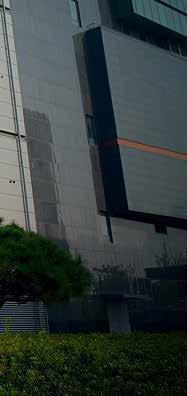


BY ANGELA K. ROBERTS PHOTOS PROVIDED

A new era of technology is dawning in the Midwest. Top-tier semiconductor supplier SK hynix is helping to spearhead the transformation with plans to create an advanced manufacturing facility at Purdue Research Park in West Lafayette.
With an investment of nearly $4 billion, the company aims to build a state-of-the-art facility that will produce memory chips powering AI systems like ChatGPT. The project is poised to create a ripple effect of economic growth, bringing more than 1,000 direct jobs to north central Indiana and generating thousands more through supply chain partners, says David Broecker, chief innovation and collaboration officer with Purdue Research Foundation.
Combined with the upcoming openings of two Intel fabrication plants near Columbus, Ohio, the growing semiconductor supply chain could significantly reshape the Midwest’s economy and solidify its position in the global tech landscape.
“We believe this project will lay the foundation for a new Silicon Heartland, a semiconductor ecosystem centered in the Midwest Triangle,” said Kwak Noh-Jung, SK hynix CEO, at his compa-
ny’s joint announcement with education and government officials in West Lafayette in April. “This facility will create local, high-paying jobs and produce AI memory chips with unmatched capabilities, so that America can onshore more of its critical chip supply chain.”
The largest single economic development initiative in the history of the state, the SK hynix announcement is an indicator of Indiana’s growing leadership in the hard-tech sector. Widen the lens further, and it’s a sign of the Midwest’s growing influence in semiconductor innovation.
With a pool of manufacturing and engineering talent, affordable real estate, abundant energy resources, supportive government policies and proximity to research and educational institutions, Indiana and Ohio have now attracted two of the largest semiconductor manufacturers in the world.
In 2022, Intel announced plans to build two new plants in Columbus, Ohio. The nearly 1,000acre mega-site will be able to accommodate eight chip factories while also supporting operations
and ecosystem partners.
Intel is considered the fourth largest semiconductor facility in the world, according to Investopedia.
SK hynix is ranked seventh. Combined, the two companies’ Midwestern facilities will not only add thousands of jobs to Indiana’s and Ohio’s economies, but also ensure a more secure supply of critical semiconductors right here in the United States, officials say.
“This transformational investment reflects our state and university’s tremendous strength in semiconductors, hardware AI and development of the Hard-Tech Corridor,” said Purdue President Mung Chiang at the SK hynix announcement. “It is also a monumental moment for completing the supply chain of the digital economy in our country through the advanced packaging of chips.”
The deal with the South Korean tech giant has its roots in Washington, DC, where the U.S. Congress passed the CHIPS and Science Act of 2022. Designed to help ensure the United States maintains and advances its scientific and technological edge, the law has earmarked $52.7 billion for semicon-
ductor research, development, manufacturing and workforce development.
The semiconductor industry is a critical component of the global economy, powering everything from smartphones and computers to cars and medical devices.
Americans invented semiconductors and used to represent 100 percent of the world’s semiconductor manufacturing capacity, according to the Center for Strategic and International Studies. By 2020, that number was down to 12 percent, according to the National Institute of Standards and Technology.
The CHIPS and Science Act is expected to help remedy that by encouraging billions in investments by the private sector.
‘A front-row seat’
Chiang advised on the law, which was co-sponsored by Indiana Senator Todd Young.
In 2020, on leave from his role as dean of Purdue’s College of Engineering, Chiang served as Science and Technology Adviser to the U.S. Secretary of State, where he initiated tech diplomacy programs.
“Mung had a front-row seat on how to bring back semiconductors to us," Broecker says.



According to Broecker, success in the semiconductor marketplace is a three-legged stool requiring R&D, workforce development and manufacturing.
Purdue already had a legacy of research in the arena. The next leg: developing a pipeline of talent.
“Mung and the university wanted to create a whole series of programs, educating engineers and technicians, not just degree providers, but other opportunities to develop the workforce,” Broecker says.
Purdue’s pioneering work in semiconductor fabrication and physics, beginning over 75 years ago, led to the invention of the transistor, the essential building block for today’s electronic devices.
That legacy has continued to shape Purdue’s research today, where semiconductor research encompasses microelectronics materials, chip design, tool development, devices, manufacturing, packaging and sustainability. Research spans both software and hardware.
Now, in addition to upgrades to Purdue’s Birck Nanotechnology Center for enhanced semiconductor research, Purdue has introduced several new educational programs to prepare the next generation of engineers and technicians for technology and manufacturing jobs to come.
The College of Engineering’s new Semiconductor Degrees Program (SDP) is poised to educate the next generation of semiconductor engineers. According to the university, the United States will need a minimum of 50,000 trained semiconductor engineers over the next five years to meet growing demands.
The SDP offers a variety of degrees and credentials, including a master’s degree, stackable certificates and a bachelor’s level minor or concentration. The program covers a wide range of topics, from semiconductor materials and devices to system-on-chip design and advanced packaging.
Purdue and collaborators also are launching workforce development programs. A two-week program, which ran for ris-
ing high school juniors and seniors the last two summers, included hands-on experiences with faculty, site visits to area manufacturers and talks from industry leaders. It was funded in part by READI (Regional Economic Acceleration and Development Initiative), a state initiative promoting strategic investments designed to make Indiana a magnet for talent and economic growth.
Officials such as Mark Lundstrom, chief semiconductor officer at Purdue University, envision the SK hynix alliance creating a virtuous cycle reinforcing research, education and manufacturing.
“Undergraduates will have opportunities for internships, co-op and full-time employment when they graduate. Graduate students and faculty will work closely with SK hynix researchers, not only on basic research, but also to accelerate the transition of research into pilot production and manufacturing,” he said at the company announcement.
“This is just the beginning. As other companies see what’s happening here in the heart of the Heartland, they’ll come too, and a significant new cluster of semiconductor manufacturing and research will emerge.” ★




The Greater Lafayette Commerce Ask the Experts program is perfect for you. Greater Lafayette Commerce is teaming with experienced professionals who have the skills you’re looking for to help you overcome challenges and provide you with perspective and direction.
Ask the Experts provides small business owners with the information they need while also facilitating the development of lasting professional relationships.

Juan Carlos Cholula is a proud first-generation Mexican American from Lafayette. After graduating from McCutcheon High School, he enlisted in the U.S. Army, where he served with dedication before returning to his hometown to pursue his passions for community service and mentorship.
Wrestling has always been close to Cholula's heart, and he became a familiar face in the Greater Lafayette wrestling community, coaching at multiple local middle schools, high schools and camps. Alongside coaching, Cholula began training in Brazilian Jiu-Jitsu, and he became a world-class practitioner earning a spot on Team USA, competing internationally in countries such as Kazakhstan and Serbia, proudly representing the country he served.
As Cholula's passion for Jiu-Jitsu took him around the globe, he realized he needed a flexible career that would allow him to continue training while also supporting his entrepreneurial spirit. He founded Horizon Media Management, a web design and online marketing company. For more than five years, he has helped local business owners grow their online presence, using his decade of experience in sales and customer service to provide tailored solutions.
With a "service-first" mentality, Cholula is committed to leaving every business he works with better than he found it. He’s always striving to help others improve and grow, embodying the philosophy: Care more, try harder.
Engaging Spanish-speaking clients to maximize outreach
In today’s globalized digital landscape, having a multilingual website is no longer just an option, but a necessity for businesses aiming to maximize their outreach. A website that offers content in multiple languages, particularly Spanish, can significantly expand a business's audience, enhance customer engagement and drive growth.
As the Spanish-speaking population continues to grow, not only in the United States, but also in our own backyard of Lafayette and West Lafayette, offering a form of communication to this demographic through a multilingual website is a strategic move that can yield substantial benefits.
The growing Spanish-speaking market
Spanish is the second most spoken language in the world by native speakers, with more than 460 million people worldwide. Lafayette and its surrounding areas also have seen a massive increase in the Spanish speaking population.
According to the U.S Census Bureau, the Spanish speaking population has more than doubled over the last couple of decades, from 6.4% in the early 2000s, to 15.2% since 2020.
This number is projected to increase, with estimates suggesting that the U.S. could become the largest Spanish-speaking country by 2050. This highlights the significance of the Spanish-speaking market and the potential it holds for businesses that can communicate with this audience.
One of the primary benefits of a multilingual website is the ability to reach a broader audience.
By offering content in Spanish, businesses can tap into a market that may otherwise be inaccessible due to language barriers. A study by Common Sense Advisory found that 72.4% of consumers are more likely to buy a product with information in their native language.
This underscores the importance of providing content that resonates with the target audience's linguistic and cultural preferences.
Engaging Spanish-speaking clients
About 10% of households in Tippecanoe County report speaking Spanish as their primary language. In addition to expanding reach, offering content in Spanish can lead to deeper engagement with Spanish-speaking clients and families. Language is a powerful tool for building trust and rapport.
When businesses communicate with clients in their native language, it shows respect for their culture and a commitment to meeting their needs. This can lead to higher levels of customer satisfaction and loyalty.
Numerous companies have successfully implemented multilingual websites and reaped the benefits. For instance, Airbnb offers its platform in multiple languages, including Spanish, which has allowed the company to penetrate international markets effectively.
Similarly, Shopify provides multilingual support to help businesses cater to diverse audiences, resulting in increased global sales.
According to a study by CSA Research, 56.2% of consumers say that the ability to obtain information in their own language is more important than price. This illustrates the critical role that language plays in consumer decision making and the potential revenue loss for businesses that fail to offer multilingual support.
In conclusion, a multilingual website, particularly one that offers content in Spanish, is a powerful tool for maximizing outreach and engaging a larger audience. By communicating with the growing Spanish-speaking market, businesses can increase their visibility, improve customer satisfaction, and drive significant growth into new markets.
The benefits of a multilingual website are clear: It not only broadens the reach of a business but also deepens its connection with a diverse and expanding customer base.
As the digital landscape continues to evolve, the importance of multilingual content will only become more pronounced, making it a crucial component of any successful business strategy.





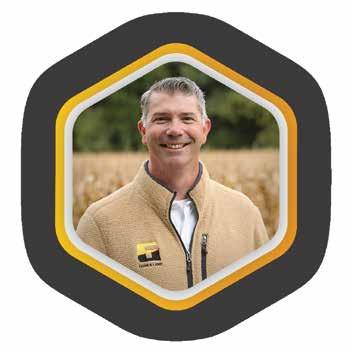




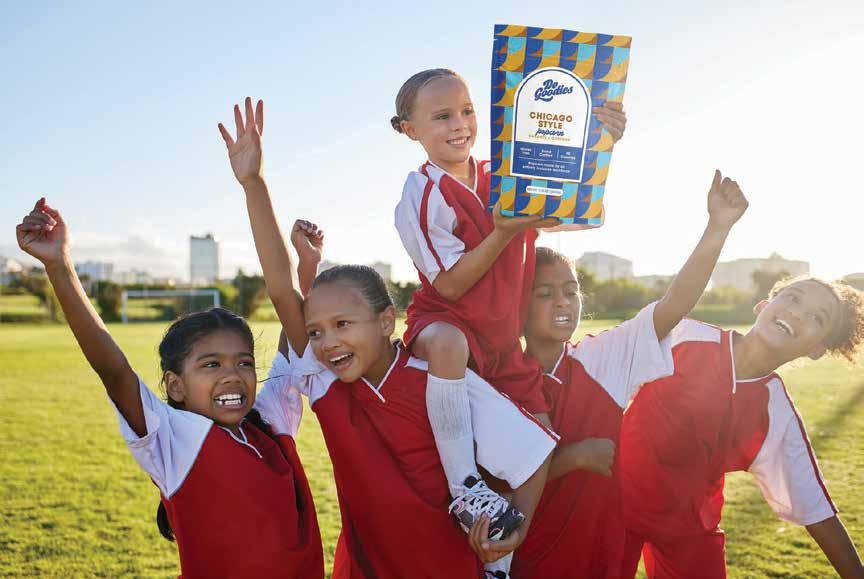
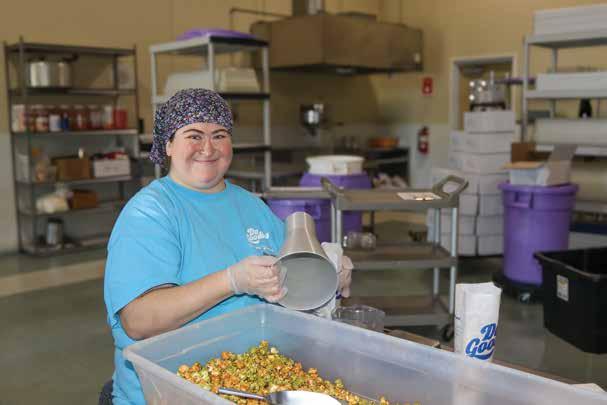
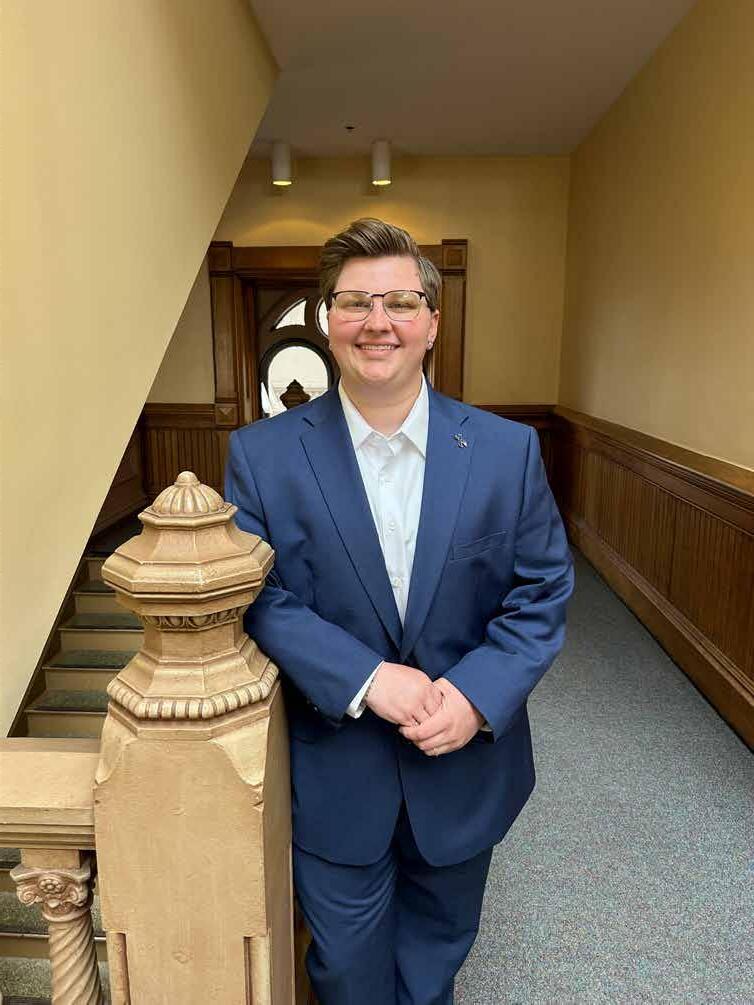
Volunteers give a voice to vulnerable children in the legal system

When Hilary Laughner took her oath of office as a volunteer Court Appointed Special Advocate in 2015, she never imagined she would one day helm the Tippecanoe County CASA program. She just wanted to help kids. She found the work so fulfilling, she became a full-time staff advocate in 2017, then a volunteer coordinator in early 2023 before she was appointed executive director in September 2023.
“I’ve always been passionate about working with kids,” Laughner says. “When I learned about the CASA program, I knew it was something I wanted to be a part of. I wanted to make a difference in my community. That’s ultimately my drive, even as executive director. I may no longer be boots on the ground, but I’m still passionate about serving the children of this community because one day they’re going to be our teachers and our leaders.”
Court Appointed Special Advocates are volunteers who advocate on behalf of children who have experienced abuse or neglect. Indiana law refers to abused and neglected children as a child in need of services (CHINS). Tippecanoe County handles approximately 250 CHINS cases every year and each of those children, whether they are placed in foster care or remain in their home, is assigned a CASA to advocate for them in court.
CASAs are often referred to as the eyes and ears of the juvenile court system, making recommendations regarding the child’s placement and needed services and monitoring a child’s situation until the case is released by the court. The national CASA movement was started in Seattle by Judge David Soukup in 1977.
“It terrified me to make decisions about kids when I didn’t have anybody there that was only advocating for the child,” Soukup recalled about the founding in a 2018 interview with CASA. “Who is more unable to represent themselves than a 3-, 4-, 5-, 10-year-old child?”
Soukup conceived the idea of using carefully screened and trained community volunteers to speak for the best interests of children in court. CASAs help ensure that children are safe, have a permanent home and an opportunity to thrive.
The Tippecanoe County CASA program began in January 1987 as one of the first 15 CASA programs in Indiana. A part-time coordinator oversaw the program’s first 20 volunteers who were sworn in on July 22, 1987. In 2005, Indiana became the first state to be awarded national certification by the National CASA Association. Today, the Tippecanoe County CASA boasts 60 volunteers, but there still are children on the waiting list who need a CASA.
“Our volunteers undergo 30 hours of training before they are sworn in as officers of the court,” Laughner says. “As a CASA, it is your responsibility to talk to everyone to understand what is going on in a child’s life. There are a lot of parties involved in a case — social workers, family members, potentially a foster family or law enforcement, as well as various service providers. A CASA must understand every aspect of a child’s life and environment to make a well-informed recommendation.”
The Department of Child Services outlines the basic needs that must be met to protect children from abuse and neglect by providing safe, nurturing and stable homes. These include food, shelter, clothing, medical care and protection from harm. One thing CASAs learn in training is that their own standards of living may not be the same as another family’s, but that doesn’t mean a child’s basic needs aren’t being met. CASAs must put aside their own biases to objectively evaluate each situation.
“It’s always a goal to reunite a child with their parents,” Laughner says. “The parties in the case
can have different opinions on whether or not basic needs are being met, but ultimately the judge makes the final decision.”
Advocating for a child who has experienced abuse and neglect can be emotionally challenging and some CASAs may experience secondary trauma, but each CASA is assigned to a volunteer coordinator who can provide support and help them process a difficult case.
“There are times when the things you are hearing, seeing or reading are very traumatic,” Laughner says. “But you don’t need a social work background to be a CASA, you just need to be passionate about helping children. Our staff is here to support you and help walk you through the rest. We’ll use whatever skills you bring to benefit the children that you’re serving.” ★

NUMBER OF VOLUNTEERS: 82 ASSIGNED TO A CASE; 89 TOTAL
TOTAL CONTACT LOG HOURS FOR VOLUNTEERS AND STAFF ADVOCATES: 6,543.80
NUMBER OF CHILDREN SERVED: 305
NUMBER OF CONTACTS MADE FOR VISITS WITH CHILDREN: 1,710.95
NUMBER OF TRAINING HOURS FOR VOLUNTEERS AND STAFF ADVOCATES: 744


Volunteer to be a CASA
Tippecanoe County CASA holds training classes in the spring and fall. To submit your volunteer application, visit tippecanoe.in.gov/CASA.
The CASAs for Kids Fund was created in 1998 to support the Tippecanoe County CASA program in its efforts to enrich the lives of abused and neglected children. The Fund accomplishes this through raising, managing and distributing funds to:
• Provide positive intervention for kids through educational assistance, goods and other services which are not provided by any other source;
• Support CASA volunteers, staff and other activities to further the goals of the CASA program; and
• Raise awareness of the community’s opportunity to make a difference in children’s lives.
The Subaru CASA Cycling Challenge, held in August, is the main fundraising activity for the CASA for Kids Fund. To learn more about the CASAs for Kids Fund or to donate, visit casasforkidsfund.com.

The friends and family of Julie Sennott and Michael Dunlap raise money annually to ensure every CHINS in Tippecanoe County has a gift to open on Christmas Day. Julie and Michael devoted their careers to serving children and youth. Julie was a case manager for the Indiana Department of Child Services and Michael was a Tippecanoe County juvenile probation officer. Although Julie and Michael both died in 2009, their legacy lives on through Julie and Michael’s Christmas Stocking Fund, which is administered by Tippecanoe County CASA.



From the fields to the factory floors, Greater Lafayette is a hotbed of innovation. With an emphasis on nextgeneration products, sustainable practices, expanded output and workforce growth, learn how four local businesses are driving the regional economy.
BY ANGELA K. ROBERTS

Inari (Ag technology) - inari.com
Big news: Growing its Indiana footprint and accelerating product operations
Inari Agriculture is deepening its roots in Indiana. The company’s new $20 million, 42,000-square-foot expansion in West Lafayette is a major milestone in its mission to revolutionize farming.
By doubling westside greenhouse facilities and state-of-the-art LED lighting and environmental controls, as well as adding more office and warehouse space, Inari is planting seeds for the future. The company expects to grow its local employee base as well, which accounts for about half of Inari’s more than 300 team members worldwide.
Inari is dedicated to a future with a thriving planet, food security for all and the well-being of farmers. Its SEEDesign™ platform is harnessing advances made over the last decade in complex gene editing, artificial intelligence and genomics. The platform consists of two components, which Inari colloquially calls a “blueprint” and a “toolbox.”
The blueprint is a predictive design that helps scientists better understand which gene edits will be the most effective. The toolbox allows scientists to turn genes on or off, lessen or strengthen their impacts and make gene replacements.
Ultimately, the company says, the technology will help farmers increase food production while minimizing reliance on planetary resources and synthetic chemicals.
In recognition of its groundbreaking work, Inari has been named the Overall AgTech Company of the Year for the last three years (2022, 2023 and 2024) in the AgTech Breakthrough Awards. The prestigious award highlights Inari’s position as a leader in the agricultural and food technology sectors.

Subaru of Indiana Automotive - subaru-sia.com
Big news: A production shift to new models and hybrid technology
It might have been a tagline to sell cars, but the late Bob Rohrman captured the importance of automobile manufacturing to the local economy when he urged buyers to “keep Lafayette driving” by purchasing a Subaru from his local dealership.
Since the first Subaru Legacy rolled off the assembly line nearly 40 years ago on the outskirts of Dayton, Subaru of Indiana Automotive (SIA) has contributed millions to the local economy by generating products, creating jobs, paying taxes and driving innovation.
Now, the plant is gearing up for a major transformation: expanding to accommodate production of a hybrid electric version of the Forester model. Earlier in 2024, the Lafayette City Council approved $64.5 million in tax abatements for SIA for a new building, container yard and equipment.
The manufacturing project is expected to create 100 new full-time permanent jobs and secure the employment of more than 6,000 existing full-time permanent positions. These figures don’t include the temporary jobs that may be created or retained during the construction phase.
A subsidiary of Subaru U.S. Holdings, SIA is the brand’s only manufacturing site outside Japan. The building produces about half of all Subaru vehicles sold in North America.
SIA and its parent company, Subaru Corporation, are committed to making the world a better place. The Subaru Love promise is a pledge to be a positive force for the environment, health, education, pets and community.
In keeping with these ideals, SIA was the first auto assembly plant in the United States to achieve zero landfill status. The facility also boasts a wildlife habitat certification.
SIA and its associates also provide more than $1 million annually to local nonprofit organizations. The SIA Foundation, established in 1997, has awarded more than $3 million in capital grants to organizations across Indiana.

Tate & Lyle Solutions USA, LLC - tateandlyle.com
(Also known locally as Newco)
Big news: Expanding Lafayette operations, reinforcing commitment to local economy
In Indiana, where fields of corn blanket the summer countryside in hues of green, the state’s most plentiful crop continues to shape the Greater Lafayette economy in unexpected ways. Thanks to the presence of food giant Tate & Lyle Solutions USA, LLC, corn is not only sold by farmers for food and feed, but also turned into corn starch.
Tate & Lyle has facilities at two locations in Lafayette: Sagamore Parkway North and East 350 South. The Sagamore facility is the company’s flagship specialty starch plant in the United States.
Starch is used in a wide range of food products, including bread, pasta and sauces. It’s manufactured through a process called wet milling, which breaks down corn kernels into parts: corn oil, protein, corn starch and fiber.
The Lafayette facilities currently operate under the Tate & Lyle brand name Newco, which specializes in plant-based products for the food and industrial markets.
Tate & Lyle has long touted its innovation practices and commitment to sustainability. The Lafayette South plant has received multiple consecutive Energy Star certifications from the United States Environmental Protection Agency.
In February 2024, the Lafayette City Council approved a seven-year tax abatement in an Economic Revitalization Area for the company. The $24.5 million project will expand the Sagamore plant’s roll drying finishing leg capacity, increase salt mixing and add another packaging line. It’s expected to be completed by summer 2025.
While the expansion won’t create any new full-time permanent positions, the company expects to retain the more than 300 existing full-time, permanent positions it has here. That’s in addition to any jobs created or retained through the construction phase of the project.





Arconic - arconic.com
Big news: Producing advanced aviation materials and promoting workforce development
From the skies to space to the open roads, Arconic’s Lafayette facility has been a driving force in transportation innovation for nearly a century, shaping the way we fly, explore the solar system and drive.
Arconic’s history in Lafayette traces back to the 1930s, when the Aluminum Company of America (Alcoa) built an aluminum fabrication plant on Main Street. After World War II, Alcoa expanded beyond the aviation market into aerospace, automobiles and construction.
Fast forward to 2014. That year, Alcoa opened the world’s largest aluminum-lithium plant in Lafayette. Two years later, Alcoa split. The Lafayette facility became part of the newly created Arconic family of companies, but its mission remains the same.
Aluminum is lightweight, strong and durable. Lithium is even lighter. When the two elements are combined, the resulting alloy provides strength, toughness, stiffness, high-temperature performance and corrosion resistance at a cost that’s difficult to beat.
The Lafayette plant has the capacity to produce up to 44 million pounds of aluminum-lithium annually. The facility also produces the world’s largest aluminum-lithium ingots for single-piece aircraft components.
With an eye toward workforce development, Arconic’s philanthropic arm, the Arconic Foundation, awarded Greater Lafayette Career Academy a $25,000 grant in 2022. The funding fueled a program to attract students to and educate them on advanced manufacturing.
Since then, the academy has experienced a 180% increase in manufacturing enrollment. That jump will help to ensure that Arconic and other Greater Lafayette manufacturers will be prepared to meet the workforce demands of the near future, whether in transportation, agriculture or other industries. ★


It happens every holiday season, when you sign on for the office gift exchange or the extended-family Secret Santa swap: You vow to contribute a homemade gift that exudes creativity and personality, but you run out of time and energy and end up grabbing a boring big-box gift card on your way to the party. This year, there are no excuses. Here are five home-based businesses that will do all the work for you. Fantastically original homemade gift? Check. Support for local business? Check. Time and energy to spare? Check. You’ll be the hit of the holidays. Let’s get wrapping!


BY AMY LONG
PHOTOS BY CHRISTINE PETKOV
Homemade soap, candles and body-care products
Denise Tilstra, who styles hair at Beaux Cheveux salon in West Lafayette, had plenty of pandemicrelated down-time in 2020. So, for fun she and her husband, Mike, dabbled in candle-making, and then soap-making. The endeavor quickly grew into a burgeoning business called Torch and Tallow that has taken over the couple’s 1,100-square-foot Lafayette home, turning their guest bedroom into a workshop and their spare bathroom into a curing room, with a dehumidifier in the shower.
In addition to candles and soap, the Tilstras handcraft an entire line of home fragrance and body care products – including shampoo and conditioner, beard oil, room spray and even pet balms for puppy noses and paw pads – that are available online, at the Lafayette farmers market and at select regional fairs and festivals.
The Tilstras make all of their small-batch soaps from scratch, combining water and lye to start the chemical process, and then adding oils, color and fragrance. Their products are made from natural ingredients, including hemp seed oil and donkey milk, as well as locally sourced beeswax, honey and even beef tallow.
“The more research we do, [we find that] tallow is amazing,” Mike says. “It’s so chock-full of vitamins and antioxidants, and it’s so good for your skin.
Their very first foray into from-scratch soap produced a batch of oatmeal-honey bars that have always been popular, outselling the other 50 soaps – with scents that include tobacco-cedarwood, blackberry-vanilla and lemon shandy – on offer.
“That one has been with us from the very beginning and has not slowed down as far as being our number-one-selling soap,” Mike says.
In addition to soap, Torch and Tallow offers something for everyone on your list. For kids, there are bath bombs that dissolve to reveal surprises inside. For the eco-conscious, there are bars of shampoo and conditioner (minus the plastic packaging of conventional bottles). For your Purdue student, consider one of a half-dozen West Lafayette-themed candles, such as Slayter Sledding, with
scents of cranberry and winterberry, and Breakfast Club, which smells like rum, vanilla and smoky tobacco.
For the aspiring wizard, Torch and Tallow offers a line of Harry Potter-inspired candles, including the extremely popular Sorting Candle that starts white but burns down to reveal the color of a Hogwarts house. And for the Disney fan, there’s a line of more than 20 scented candles inspired by the Disney theme parks, rides and attractions, such as Main Street Bakery, which evokes the scent of freshly baked sugar cookies.
Find Torch and Tallow at the McCutcheon High School Holiday Bazaar on Nov. 9, and the Harrison High School Band Craft Show on Nov. 23. For last-minute shoppers, all products are available online at torchandtallow.com, and Mike offers to deliver locally.
Locally grown houseplants in unique planters
On the first day of school in August, Paige Carnahan walked her son to the bus stop. As she passed neighbors along the way, she realized that she has gained a reputation on her block.
“Everybody was like, ‘Hey, it’s the plant lady! I need to come see you!’ A lot of my neighborhood is pretty used to me selling plants by now,” says Carnahan, who propagates succulents and cacti and pots them in quirky planters and containers scavenged from flea markets and estate sales – think vintage teacups and colorful containers shaped like elves or animals.
From spring through fall, Carnahan sells her plants from her Crafternoon Delights booth at the Purdue and Lafayette farmers markets. She also frequently lists on Facebook Marketplace and sells on Fridays from the front porch of her Lafayette home.
Carnahan had been crafting and selling jewelry and sewn goods, such as bags and bow ties, since 2009, but stumbled into the plant business only about five years ago.
“I wanted a new aesthetic on my porch and started selling all my bright pots and all my own plants that I had been propagating,” Carnahan says. “It

went really well.” Her business grew from there, allowing her to build a 10-x-12-ft. greenhouse in her backyard in 2023. There, Carnahan lovingly tends to her sprouts and sprigs, which are all in different stages of growth.
Many of her seedlings come from Dan DeCaro, of Gryphon Greenhouse in Lafayette, who has mentored Carnahan over the years, teaching her to propagate and offering her many rare and interesting cacti and succulents that can’t be found in any grocery store floral department.
“He’s my plant guru,” says Carnahan, who pays it forward by offering only healthy plants that have been freshly repotted in good soil, carefully drilling drainage holes in the thrifted containers; giving away a printed instruction tag with every plant she sells, and offering plant-care advice to anyone who asks.
Her job involves “definitely a lot of teaching,” Carnahan says. “Which is one of my favorite parts of this.”
In the off-season, when she’s not busy with the farmers markets, Carnahan jokes that she switches from the “crazy plant lady” to the “crazy pottery lady” – as she spends her time searching for funky pots and then washing and refurbishing them.
“Finding all that weird stuff, it does take a long time,” she says. “It’s a labor of love.”
Carnahan says she does swift business in tiny succulents potted in dainty espresso mugs and tea cups. The compact containers and low-maintenance plants make them the perfect décor for dorm rooms – but they also fit in an office cubicle, on a kitchen windowsill or just about anywhere else, making them ideal gifts for anyone on your list.
For the holidays, keep an eye out for Carnahan’s special winter-themed containers, like Norfolk pines planted in pots shaped like sleighs or elf boots. Outside of farmers market season, Crafternoon Delight merchandise can be found in Lafayette at Pinch of Pepper Tea & Spicery at 619 Columbia St.






Hearing loss is more prevalent than you might think and can affect communication. Our providers are specially trained to understand, support, and treat hearing loss with cutting-edge technology to keep you and your loved ones hearing clearly.

Vintage-inspired jewelry
“My superpower is making earrings,” says Autumn Libengood. And she’s not joking.
Libengood is the creative force behind Autumn Rose Designs. Her kiosk at the Tippecanoe Mall and her booth at the Lafayette farmers market overflow with handcrafted jewelry, including oodles of drop and dangle earrings – as well as bracelets and necklaces – strung with sparkly crystals, wooden beads and acrylic baubles.
Her team, which includes Libengood’s mother, Debbie, and father, Norman, also crafts rings, pendants and even light fixtures from antique silverware and hardware, including dresser knobs and cabinet pulls. Perusing her shop feels like unearthing a trove of jewelry in your great aunt’s attic.
Libengood has been crafting with beads since she was a young girl. As she grew older, she shopped flea markets and toured old homes with her parents and fell in love with the old fixtures and vintage hardware she discovered. She asked her dad if he could help her fashion some of her finds into pendants.
“I just started to put pieces and parts together, like upcycling, and the vintage style just took off,” she says.
Libengood casts all over the globe for her supplies. Crystals are sourced from Austria. Earring wires come from Turkey. And the antique, upcycled
pieces are unearthed on the family “junking” trips.
“We’ll just take off for a day into some random place like Kokomo or Madison or Cincinnati, and we go to all the antique stores and all the junk stores along the way,” Libengood says. She looks for antique buttons, old dresser pulls and drawer knobs and even broken and discarded rosaries with symmetrical shapes and ornate embellishment to incorporate into her one-of-a-kind creations.
But not all of Libengood’s pieces are vintage-inspired. Some of her jewelry has a very modern and streamlined aesthetic incorporating chunky wood and acrylic beads. “I have learned that I need to appeal to everybody,” Libengood says. “You have to be the right person to want to wear a hardware necklace. But the wood and acrylic is so universal. Everybody loves them. My wood and acrylic earrings sell hand-over-fist.”
All of Libengood’s jewelry is assembled in the basement kitchenette of her parents’ Lafayette home, which has been repurposed as a workshop packed with beads and bibelots and all her supplies and tools. “I laugh: Where food should be, I have all my beads,” Libengood says. “I have everything organized pretty meticulously.”
By far, Libengood says her busiest time is November to December, so if you’re looking for a holiday gift, shop early for the best selection. The Tippecanoe Mall kiosk will be open Thursday through Sunday afternoons through the holidays.
Homemade cookies
Early in 2023, 16-year-old Audrey Ward and her mother, Laura, started baking macarons for fun. By the time autumn rolled around, they were getting pretty good at it.
One problem: “We were baking so many that we couldn’t eat all of them ourselves,” says Laura Ward. Even after sharing their creations with friends and family, their kitchen was crammed with cookies. To deal with the surplus, they sold them at a local holiday bazaar.
“It did really well, so we just decided to roll with it,” says Ward. Their little business, A+ Macarons, was born, and by the end of the year they had received the requisite health department certification and formed an LLC.
Since then, the Wards have launched a website for online orders, which can be picked up at their Lafayette home. They also sell at a variety of different festivals and fairs around town, such as OUTFest and Mosey Down Main Street – a schedule that offers greater flexibility than the weekly farmers market; they can bake when they want to, and take a week or two off when they’re ready.
But while the baking schedule is flexible, the Wards have learned that macarons themselves are not so forgiving.
“They’re really persnickety little treats,” says Ward, explaining that they have to track the humidity in the kitchen, maintain a precise oven temperature and fold the ingredients in just so to turn out consistent batches. There is an entire Facebook group genre dedicated to supporting frustrated macaron makers.
“I was like, ‘Really? It couldn’t have been brownies?’ ” Ward laughs about her daughter’s budding interest in baking.
But it was the difficulty of the endeavor that inspired Audrey, who’s now 18 and attends Purdue part-time. “She likes to be challenged and to overcome obstacles,” her mother says.
She also enjoys the opportunity to be creative. A basic macaron is a blank slate for almost any imaginable flavor combination. “She is definitely an artist at heart,” Ward says. “She loves to come up with new flavors and new fillings.”

Unusual flavors have included fruity cereal, root beer float, maple waffle and cinnamon roll. The Wards have even stuffed macarons with little bites of donuts and blueberry muffin morsels.
Ward says that Audrey deploys extra flair for the holidays or special occasions. In April, for the solar eclipse, the A+ Macarons were decorated like little suns and moons. Around the holidays, the cookies feature flavors such as mint Oreo, hot cocoa, gingerbread and egg nog, with snowflake designs and chocolate garnishes.
In addition to the fun and fanciful flavors –the selection changes each month – they also have a supply of stand-bys, like vanilla, strawberry and cookies and cream. For custom orders, the Wards request at least a week of lead-time, so don’t delay for holiday gifting. Find them at aplusmacarons.com.

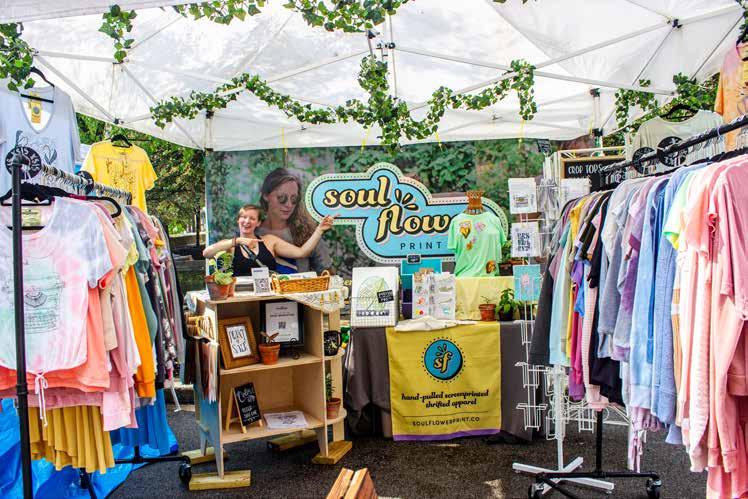



Thrifted clothing with hand-drawn screenprints
Curated, handcrafted, eco-conscious, one-of-akind: all descriptors of the West Lafayette-based clothing line from Soulflower Print Company.
When Jessica (Jess) McGregor first conceived of screenprinting her unique, hand-drawn designs on thrifted clothing, it felt like a eureka moment. After graduating from Purdue in 2016 with a degree in visual communication design, she worked for several marketing and design agencies in Greater Lafayette but realized she was not being challenged or growing in her craft.
So in January of 2020, McGregor started the Soulflower brand, designing a logo and scouring the internet for equipment to screenprint custom clothing in a studio she and her husband, Jonathan, set up in their basement.
“I was searching for what set me on fire, McGregor says. “For the first time in my career, it feels like I’m doing what I am meant to do.”
Soulflower incorporates McGregor’s deeply held beliefs and priorities, along with her creativity, training and experience. She loves thrifting and antiquing, so searching local thrift stores for just the right t-shirts or sweaters on which to print her designs is a joyful pursuit. Giving the clothing new life keeps it out of the landfill and flies in the face of fast fashion, she says.
McGregor draws her designs by hand and then digitizes them on her computer, refining the colors and sketches until pleased with the outcome. Her designs are encouraging and inspirational, emphasizing a love of nature and concern for the planet and others. She uses less toxic, water-based inks in the screen-printing process and donates a portion of her sales to the non-profit group One Tree Planted.
“A lot of people love the thrifted aspect and the fact that my clothing is sustainable, unique and one-of-a-kind,” McGregor says. “No one else on the planet will have the same shirt when you buy from Soulflower.”
And she always looks for soft and comfortable pieces in colors and fabrics that will work well with her designs.
Since quitting a full-time design job, McGregor has continued some freelance web design work but
focuses primarily on Soulflower clothing and offering some home goods such as mugs and throws with her designs. She also has created and printed designs for several local businesses on tote bags and other promotional material.
You can find Soulflower products at local and regional pop-up markets such as Monster Mash on the Wabash on Oct. 26, and the Harrison Band Craft Show on Nov. 23. In the meantime, check out McGregor’s online store at soulflowerprint.co. ★
- Radonna Fiorini contributed to this story.




BY KEN THOMPSON
PHOTOS PROVIDED BY PURDUE ATHLETICS
ARGUABLY the greatest season in Purdue men’s basketball history may not have ended with a national championship, but what a memorable six months covering Nov. 2023 to April 2024.
Matt Painter wasn’t born when Rick Mount, Billy Keller and Herman Gilliam led the Boilermakers to the 1969 NCAA championship game. In his 19th season as Purdue head coach, Painter led the Boilermakers to a school record 34 victories and their first Final Four since 1980.
On its way to the NCAA championship game against reigning national champion and top-ranked Connecticut, Purdue set numerous team and individual records. Those team records included points (3,211), assists (720), field goals made (1,109), free throws made (675) and free throw attempts (938). Purdue ranked second nationally in 3-point shooting percentage (.404) behind Kentucky, one season after finishing 281st at .322.
The Boilermakers also became the first Big Ten team to be ranked atop the Associated Press poll in three consecutive seasons.
Senior center Zach Edey swept the national National Player of the Year awards for the second consecutive season, a feat not accomplished
since the late UCLA great Bill Walton in 1972 and 1973.
Edey also earned his second consecutive Big Ten Player of the Year honor. Only three other players have won the award twice since it was established following the 1984-85 season: Ohio State’s Jim Jackson (1991-92), Michigan State’s Mateen Cleaves (1998-99) and Iowa’s Luka Garza (2020-21).
Edey broke Rick Mount’s 54-yearold career scoring record with 2,516 points and Joe Barry Carroll’s 44-year-old career rebounds mark, finishing with 1,321. Edey averaged 25.2 points a game to become Purdue’s first national scoring leader since another National Player of the Year, Glenn Robinson, in 1994.
Mount, Carroll and Robinson are considered by fans among the greatest players in Purdue basketball history. How will history and Purdue fans remember Edey?
“That’s kind of for Purdue to decide,” Edey said. “I’m not going to tell my own legacy.
“You can say whatever you want about me. You can say — however I played, you can say whatever. But you can never say that I didn’t give it my 100% every single time I stepped on the floor, every single time I went and practiced. That’s what I’ll always hang my hat on.”





Here's an example of the other milestone Edey reached during his career:
• Won the Kareem Abdul-Jabbar Award given to the nation’s top center and the Pete Newell Award (U.S. Basketball Writers Association) given to the nation’s top post player for the second straight year.
• Edey’s 37 points in the NCAA Championship game were the fourth most in title-game history and the most since 1978.
• A record 12 Big Ten Player of the Week honors.
• One of eight players in NCAA history to have at least 2,500 career points and 1,300 rebounds. Edey is the first to accomplish this since LaSalle’s Lionel Simmons from 1987-90.
• The first player in NCAA tournament history with seven consecutive games of at least 20 points and 10 rebounds. Hall of Famer David Robinson of Navy is next with five straight games.
• Edey is the first player to lead the nation in scoring and reach a Final Four since Oscar Robertson in 1960.
• Edey ranks third on the Big Ten lists in career points and second in career rebounds.
• Set school records for double-doubles in a season (30, fourth-best in NCAA history) and career double-doubles (69).

Painter was asked after the Connecticut game where Edey stands among college basketball’s all-time greats.
“When you look at his numbers against the greats, there’s no question he’s in the conversation,” Painter said. “But he’s also the winningest player at Purdue. We won our league back-to-back years by multiple (three) games. First time that’s happened in the Big Ten since I was in kindergarten.
“I think he was great in how he did it, too. People have no idea the burden you carry when you’re as good as he is, produce like he does going into opposing arenas. He’s going to be a terrific NBA player. We’re really proud of him.”
Edey wasn’t the only record setter to wear gold and black this past season.
Sophomore point guard Braden
Smith set the Purdue and Big Ten single-season assists record with 292. That total is the third-best for a sophomore or younger in NCAA history.
Smith also became the second player with at least 450 points, 275 assists and 200 rebounds in a season. That standard was first achieved by BYU’s Kyle Collinsworth in 2016.
Three starters – Smith, guard Fletcher Loyer and forward Trey Kaufman-Renn – return, hoping to lead Purdue to its second Big Ten championship three-peat since Gene Keady’s squads did it in 1994, 1995 and 1996. During the past eight seasons, the Boilermakers are 113-42 in conference play, 16 games better than second place Michigan State (97-58).
Also returning is 2021 Indiana Mr. Basketball Caleb Furst and a pair
of sophomores who saw significant playing time during Purdue’s run to the Big Ten championship and in NCAA tournament play. Camden Heide is the son of 1979 Lafayette Jeff graduate Craig Heide and showed off 3-point shooting skills to go with his alley-oop dunks. Myles Colvin is the son of former Purdue football great Rosevelt Colvin and younger brother of volleyball standout Raven Colvin.
Junior forward Brian Waddell and 7-2 sophomore center Will Berg seek to earn playing time with the departures of Edey, starting guard Lance Jones, Big Ten Sixth Man of the Year Mason Gillis and guard Ethan Morton.
Other contributions could come from a five-man high school recruiting class that the 247Sports Composite ranks 11th in the nation and second in the Big Ten behind

Rutgers. Two recruits rank in 247Sports’ Top 100 players for the Class of 2024: 6-4 guard Gicarri Harris (64th) and 7-3 center Daniel Jacobsen (86th). A third recruit, 6-6 guard Jack Benter of Brownstown Central, was runner-up for Indiana Mr. Basketball. Harris is the third son of Glenn Robinson, whose middle son Gelen played football for the Boilermakers.
The schedule will test Purdue frequently. The Boilermakers scheduled an exhibition game Oct. 26 at Creighton to benefit the United Way of the Midlands Disaster Relief Fund. The Bluejays finished 25-10 a year ago and feature 7-foot center Ryan Kalkbrenner, who led Creighton to the NCAA Sweet 16 for the third time in four seasons.
The official non-conference schedule will include a home game with national championship contender Alabama and a trip to
Marquette in November. Texas
A&M comes to visit Dec. 14 for the Indy Classic at Gainbridge Fieldhouse. A week later, Purdue travels to Birmingham, Alabama, to meet Auburn.
The Boilermakers seek to win their fourth consecutive non-conference tournament when they travel to San Diego Nov. 28-29 for the Rady Children’s Invitational.
An NCAA Final Four rematch with North Carolina State is up first, with either BYU or Mississippi awaiting the winner.
New Big Ten members UCLA and USC will come to Mackey Arena for a slate of home games that also will feature Indiana, Maryland, Michigan, Nebraska, Northwestern, Ohio State, Rutgers and Wisconsin.
USC has never played in Mackey Arena, and UCLA will be making its first regular season visit since Dec. 30, 2000. ★


Visitors to Greater Lafayette will have two extended stay options available by the end of 2024.
The lure of Purdue University convinced Ascent Hospitality to erect Home2 Suites by Hilton and TownePlace Suites by Marriott on Sachem Blvd. in West Lafayette.
“The West Lafayette market is in need of having extended stay hotels, especially with being in such close proximity of Purdue University, Cook Medical and Purdue Research Park,” says Stacy Kleeman, area director of sales for Ascent Hospitality.
“Home2 Suites is somewhere guests can feel at home having the ability to make home-cooked meals in their room and spacious amenities.”
Those amenities include a business center, indoor pool, fitness center, non-smoking rooms, pet-friendly rooms and free hot breakfast. Two other amenities are at the top of Kleeman’s list of favorites.
“The Spin2Cycle … has the option to get in a quick workout while doing your laundry,” she says. “But also being able to walk out the front door and enjoy our fire pits for relaxation.”
Home2 Suites, whose target audience is Purdue families as well as long-term and weekly corporate travelers, opened over a month ahead of the neighboring TownePlace Suites in the fall.
Weekday rates begin at $129 for a studio suite with two queen beds or a king bed to $155 for a King Bedroom Suite. Weekends that feature Purdue graduation and other university events will see a range of $699 to $1,500, Kleeman says.
“Our staff has worked very hard during this transition to opening, and we are ecstatic to be in the area to provide our utmost hospitality to
each and every guest we encounter,” Kleeman says.
Like Hilton, Marriott brings a well known reputation in the hotel industry to West Lafayette. Tim Heim, director of new openings for Ascent Hospitality, is banking on that reputation to lure visitors to TownePlace Suites when it opens in December.
“One of the things Marriott does well, especially with its Bonvoy program, is being known for consistency,” Heim says. “What’s nice about staying at a TownePlace Suites, you really know what your expectation is. It’s the same if you go to a SpringHill Suites or any of the Marriott brands. The guests who travel to West Lafayette are going to know what to expect when they stay at a Marriott hotel.”
The Bonvoy program provides members with exclusive rates, mobile check-in and points toward free nights. More information can be found at marriottbonvoy.com.
Heim listed communal spaces, a fitness center with high-end equipment, and spaces for receptions and cookouts as factors that separate TownePlace Suites from the competition.
“TownePlace Suites is not only an extended-stay hotel, it’s a unique product that has a lot of special offerings,” Heim says. “We have a new Elfa closet system, which was rolled out this year at TownePlace Suites, which is unique to our brand.”
Kleeman says weekday rates for TownePlace are leaning toward the $159 to $164 range. Purdue events will bring a premium rate “in the $500 or $600 range,” she adds.
In the next year or two, Heim says Ascent Hospitality is looking to add other properties to bring to West Lafayette.
BY KEN THOMPSON


























Working together on transportation, childcare, jobs, housing, and prosperity. Thank you, Greater Lafayette. NO GOWN WITHOUT TOWN




































The magic behind the Purdue Athletics experience
BY JANE M c LAUGHLIN ANDERSON PHOTOS PROVIDED BY PURDUE FOR LIFE
PURDUE UNIVERSITY'S reputation of athletics excellence draws students, alumni and fans to all 18 of the school’s sports. More than 500 elite student-athletes from 104 majors compete on the field, court, green, mat or pool to amaze and inspire the nearly one million fans attending Purdue athletic events annually. Families use games to expose kids to college. Businesses entertain and reward clients and friends at sports venues. Alumni reconnect with their alma mater and create more glory days. Fans come to support the team and enjoy premier athletic entertainment. Visitors are treated to the welcoming Big Ten energy of Purdue University and West Lafayette. And we have the John Purdue Club to thank for that.
THE HISTORY BEHIND IT ALL
John Purdue moved to Lafayette from Ohio in 1841. Two years prior, his first visit impressed him with its vivacity and possibilities for trade. He became a successful wholesale/retail dry-goods and grocery merchant for 25 years. By 1845, he built the Purdue Block, purported to be the largest business block in the Midwest at the time. After a failed run for Congress, John Purdue purchased The Lafayette Journal. He served as Lafayette Savings Bank’s first president. His various and prosperous business ventures included investments in agricultural equipment, railroads, farmland and real estate.
After Congress passed the Land Grant College Act in 1862 under Abraham Lincoln, John Purdue offered $150,000 and 100 acres of land to the State of Indiana in 1869. The Act required that the university teach agriculture, mechanical arts and military science. Purdue stipulated that he wanted the university named after him and that he’d be a lifelong board of directors member. Classes began in 1874.
In 1958, Purdue Athletics Director Guy “Red” Mackey, Purdue Alumni Association Executive Director Joe Rudolph, and Purdue Alumni Scholarship Foundation Director C. H. “Cordy” Hall established the John Purdue Club when the Big Ten Conference announced that member schools could raise money for athletic grants-in-aid. The Purdue University Department of Intercollegiate Athletics is one of the few NCAA institutions that currently operate without state or university funding, yet they continue to compete at the same level as schools that charge athletics fees.

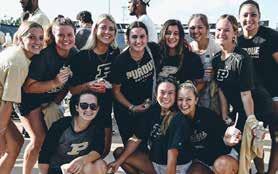


The transfer portal’s revolving door brings both opportunities and challenges. It’s an opportunity for new talent to join Purdue and a challenge to retain quality athletes. The John Purdue Club plays a crucial role in student-athletes’ lives by funding 100% of the cost of attendance to Purdue University. These scholarships help attract the best talent and incentivize them to complete their Purdue degrees. No John Purdue Club funds are used for administrative costs. In addition, coaching staff salaries and top-of-the-line athletic capital expenditures are funded by JPC, helping provide premium game day experiences for everyone. When the athletics program succeeds, it’s a win for studentathletes, JPC members, Purdue and the entire community, creating a whole lot of magic.
The 1869 Society within the John Purdue Club is comprised of small and large business donors who set up Boilermaker student-athletes for future success by offering opportunities for internships and connections to participating member businesses. The outstanding 100% placement rate of student-athletes after graduation is a testament to the John Purdue Club’s long-term commitment to the athlete who earns a Purdue degree.
“We develop champions and deliver first-class game day environments,” says Tim House, executive senior associate athletics director/associate VP for development. “We are recruiting members to be a part of the team or a bigger part of the team,” House says.
When you join the John Purdue Club, you become part of an exclusive and

special family in the pursuit of athletic excellence that benefits students and fans. First-class sporting environments create magical experiences. The John Purdue Club allows individuals and businesses the opportunity to be part of the excitement.
Nine rising membership levels qualify members for increasing benefits, such as access to discount programs, parking passes and tailgating spots, preferred basketball seating and number of tickets available for home and away game purchases, invitations to special dinners and retreats, and Final Four ticket and Bowl game requests. Top donors receive VIP treatment such as invitations to travel opportunities and exclusive Purdue gear. The more you give, the more priority points you acquire and the more perks you get. Membership starts at $200 a year and rises to reflect the impact one can make on the student-athlete.
“We’re not selling, we’re facilitating experiences,” says House. The John Purdue Club prides itself on building relationships with donors. Every member has a point of contact with a John Purdue Club representative to keep members in the loop and engaged. Currently, there are 17,274 JPC members, and growing. Why join? Your involvement directly affects the teams' successes, shows pride in the school and provides top-rate athletics entertainment for family, friends and guests.
Supporting Purdue Athletics through the John Purdue Club makes financial sense because it draws fans and visitors to Greater Lafayette and boosts hotel, restaurant and retail sales. Thanks to John Purdue and the club he inspired, the community has become more vivacious and full of possibilities. By joining, you become part of this vibrant community and contribute to its growth. ★
Learn more and get started John Purdue Club representatives can guide you through all membership and giving options. Membership is by the household, not the individual. Whether you prefer donating by mail, online, phone, automatic deduction or in person, you are making a difference to Purdue Athletics.
The membership year runs from May 1-April 30 and aligns with ticket and parking allocation. Call: 765-494-2582
Online: johnpurdueclub.com
Email: JPC@purdue.edu
Mail: John Purdue Club, 900 John Wooden Dr., West Lafayette, IN 47907
Did you know?
» John Purdue was born on Halloween, October 31, 1802.
» John Purdue died on the first day of class on September 12, 1876. His grave is on campus.
» You don’t have to be a Purdue alumni to become a John Purdue Club member.
PHOTOS PROVIDED


Community events offer heaps of holiday cheer


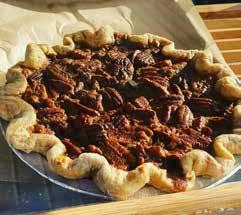

Greater Lafayette and surrounding communities will showcase oodles of events to get you into the holiday spirit. Feel the warmth of community and the joy of creating lasting memories as you embrace the magic and wonder of the season.
Brown’s Accents Holiday Market
November 1 | 4-8 p.m. and November 2 9 a.m.-3 p.m. | Brown’s Accents, 3354 S Council St., Attica
The Brown’s Accents Holiday Market draws regional vendors selling whimsical signs, natural bath products, metalwork, clothing, accessories, jewelry and more. Enjoy hot chocolate, warm doughnuts and holiday drinks as you take in the festive atmosphere.
Artisan Christmas Market at Heritage Farm
November 9 | 10 a.m.-5 p.m. and November 10 11 a.m.-4 p.m. | Heritage Farm Alpacas and Events, 4175 N 1200 W, Flora
Wander through the charming grounds of Heritage Farm where you’ll discover unique, handcrafted Christmas treasures from top-notch local artists. Don’t miss the cozy alpaca store, brimming with delightful clothing and accessories made from luxurious alpaca wool. Enjoy live music, mouth-watering food, cozy bonfires, tractor-drawn wagon rides and a special visit from Santa and Mrs. Claus. You also can interact with the 50 adorable resident alpacas. $10 per vehicle
Taylor Farm Holiday Bazaar
November 9 | 10 a.m.-4 p.m. | Taylor Farm Pumpkin Patch 9531 N 450 W, West Lafayette
The Taylor Farm Pumpkin Patch is hosting its first holiday bazaar featuring local handmade items and food trucks. This cozy family farm consigns crafters all year round.
Christmas Makers Market
November 16-17 | 10 a.m.-4 p.m. | Tippecanoe Fairgrounds
The Red Bird Market is bringing a Christmas Makers Market to Lafayette. Local arts and crafts as well as food vendors will be on hand peddling their goods. $5 admission.
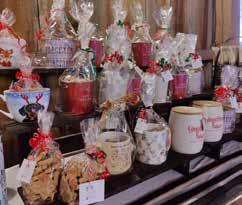

Holiday Makers Market at Wea Creek Orchard
Weekends November 20-December 15 | 5618 S 200 E, Lafayette
The Indiana Makers Market Pop Up Shop marks its 11th annual Holiday Market at Wea Creek Orchard. This curated shopping experience transforms the historic barn into a holiday shop filled with stylish and artistic handmade gifts. Helmed by Angela Vinson, the creative tour de force behind LaLa Gallery and Studio, this market features wares from makers from across the state along with artist demos, food trucks and wagon rides.
— Thanksgiving
November 23 | 10 a.m.-2 p.m. | Fifth and Main streets, Lafayette
Incorporate homegrown goodness into your Thanksgiving meal. Come shop the freshest local produce Lafayette has to offer at the Thanksgiving Holiday Market, featuring produce, baked items and craft vendors. Get all your delicious delicacies for Thanksgiving dinner and a jumpstart on Christmas shopping!
We’ve got you covered with three unique community center campuses. Visit us online to check out what we have to offer or stop by to see us. We’ll be happy to show you around!




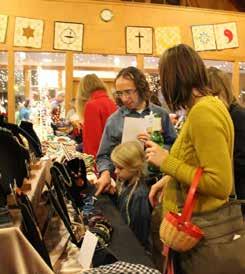
November 23 | 9 a.m.-2 p.m. | William Henry Harrison High School, 5701 N 50 W, West Lafayette
This mega craft show packs more than 150 booths into the gym, cafeteria and halls throughout the school. Put on by the Harrison Band Boosters to support the school’s band program, vendor spots at this popular craft show fill up fast. Shoppers can grab a snack or lunch at the Harvest Café. $2 admission
November 23 | 3-5 p.m. | Wolf Park, 4004 E 800 N, Battle Ground
Join Wolf Park for the annual Turkey Toss. It’s Thanksgiving turkey for everybody! Take part in the holiday festivities. Walk the trail to watch these animal ambassadors enjoy their Thanksgiving treats. Staff will be stationed along the trail to answer any questions.
November 27 | 2-6 p.m. | John R. Dennis Wellness Center, 1101 Kalberer Rd., West Lafayette
This special edition of the West Lafayette farmers market will be held indoors. Support local growers this holiday season and stock up on any last-minute needs for your Thanksgiving dinner.
Civic Theatre’s Holiday Cabaret
December 6-8 and 13-14 | Monon Depot Theatre, 320 N. Fifth St., Lafayette
Join Civic Theatre for an original Holiday Cabaret featuring a talented ensemble performing a compilation of reimagined holiday classics and contemporary musical theatre gems.
Under the direction of Kate Martin and Brian Kocher, this show is sure to be an unforgettable holiday experience. Tickets are $17-$26.
Unitarian Universalist Holiday Art Fair
December 6 | 5-9 p.m. and December 7 10 a.m.4 p.m. | Unitarian Universalist Church of Tippecanoe County, 333 Meridian St., West Lafayette
This highly anticipated annual art fair is beloved among local artists. Find unique gifts including stunning jewelry, handmade soap, ceramics, glassware, fiber arts, watercolors, photographs, ornaments, cards and so much more.




Breakfast with Santa December 7 | 9 a.m. and 12:30 p.m. | The Farm at Prophetstown, 3534 Prophetstown Road, West Lafayette
Bring your family to the Farm at Prophetstown for a warm and delicious breakfast in the Gibson Farmhouse, with guest of honor, Santa Claus! $30 for adults, $15 for kids 4-12, and children 3 and under eat free. Reservations required. Park admission not included.
Christmas at the Canal
December 7 | 10 a.m.-4 p.m. | Wabash and Erie Canal | 1030 N. Washington St., Delphi
Join the fun with the Wabash and Erie Canal’s merriest event of the year. Do some holiday shopping, make family memories and engage with Indiana history. The event will feature a handcrafted gifts bazaar, photos with Santa in the Pioneer Village, artisans and demonstrations, food and snacks, live music, interactive Canal Museum visits and Reed Case Historic Home tours.
A Very Merry Main St. Parade
December 7 | 5:30-8 p.m. | Main St., Lafayette between 11th and Second streets
Downtown Lafayette will light up with holiday magic as the community gathers for the annual lighted Christmas Parade.
Deck the Hall with Christmas and Christmas Variety Show
December 7 | Deck the Hall from 10 a.m.-2 p.m. and Variety Show at 7 p.m. | Duncan Hall, 619 Ferry St., Lafayette
Santa will make a special appearance at Duncan Hall during Deck the Hall with Christmas. This event also will feature children’s activities and refreshments. Later that evening, celebrate the season with a Christmas Variety Show featuring community members singing, dancing and performing to holiday music. Doors open at 6 p.m. $5 admission, kids 12 and under free.




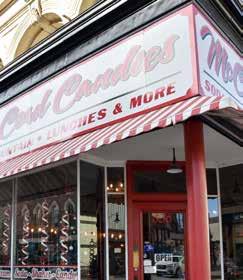
Purdue Christmas Show
December 7 | Noon and 4 p.m. | December 8 | 2 p.m. | Elliott Hall of Music, Purdue University, West Lafayette
Purdue Musical Organizations will take the stage for the 91st annual Purdue Christmas Show. This annual, lyrical musical miracle features all the student PMO ensembles singing popular holiday songs followed by a spiritual cantata in the second half.
December 13 | 3-8 p.m. | The Blessing Barn, 5350 S 900 E, Lafayette
Enjoy an evening of shopping, live music, supporting local vendors and celebrating women in agriculture. Every vendor at this winter market is a woman in ag. Browse through an incredible selection of handpicked vendors including a charm necklace bar, hat bar, boutiques, candles, soaps, jewelry, Christmas wreaths, custom signs, coffee, sweets and more.
Christmas at the Farm
December 14 | 5:30-8 p.m. | The Farm at Prophetstown, 3534 Prophetstown Road, West Lafayette Celebrate Christmas at the Farm at Prophetstown through traditions that have stood since the 1920s. There will be hot chocolate and Christmas cookies, caroling at the player piano, a craft for kids and Christmas lights decorating the farm. Stop by the barn to visit with Santa and the animals. Event is free with park admission.
Market
December 14 | 2-7 p.m. | Main Street, Downtown Lafayette
Immerse yourself in the holiday spirit at this merry market featuring more than 80 vendors offering an array of unique gifts, crafts and goodies. Live holiday music, carriage rides and a meet and greet with Santa Claus make this a joyous holiday extravaganza. ★
















LAFAYETTE OB/GYN PROVIDERS
3920 St. Francis Way, Suites 100 & 110 • Lafayette, IN (765) 428-5990





& GENETICS
3920 St. Francis Way, Suite 219 Lafayette, IN (765) 428-5990





















